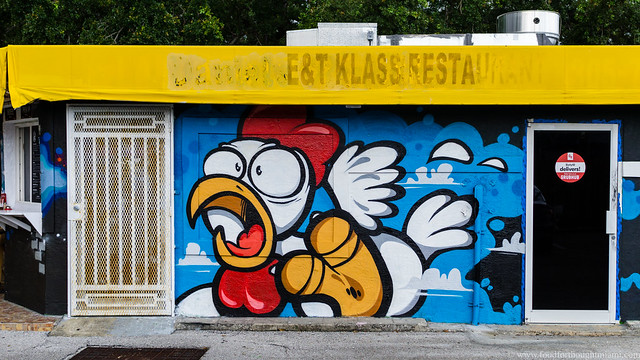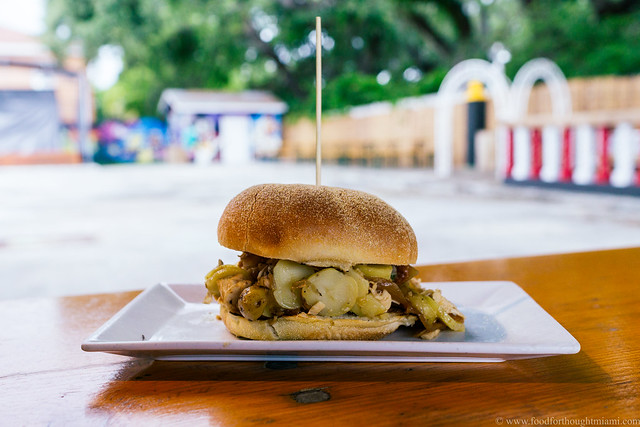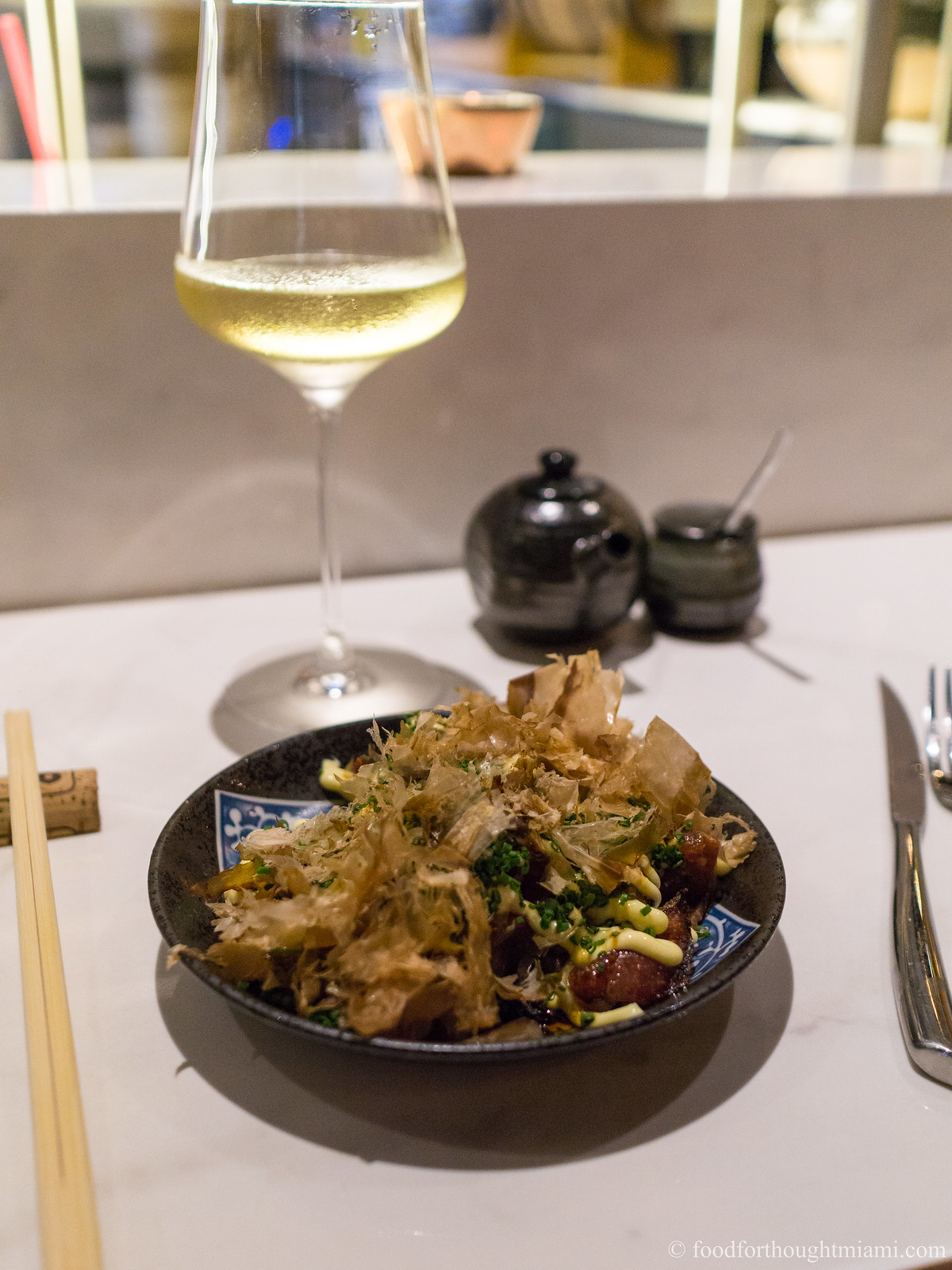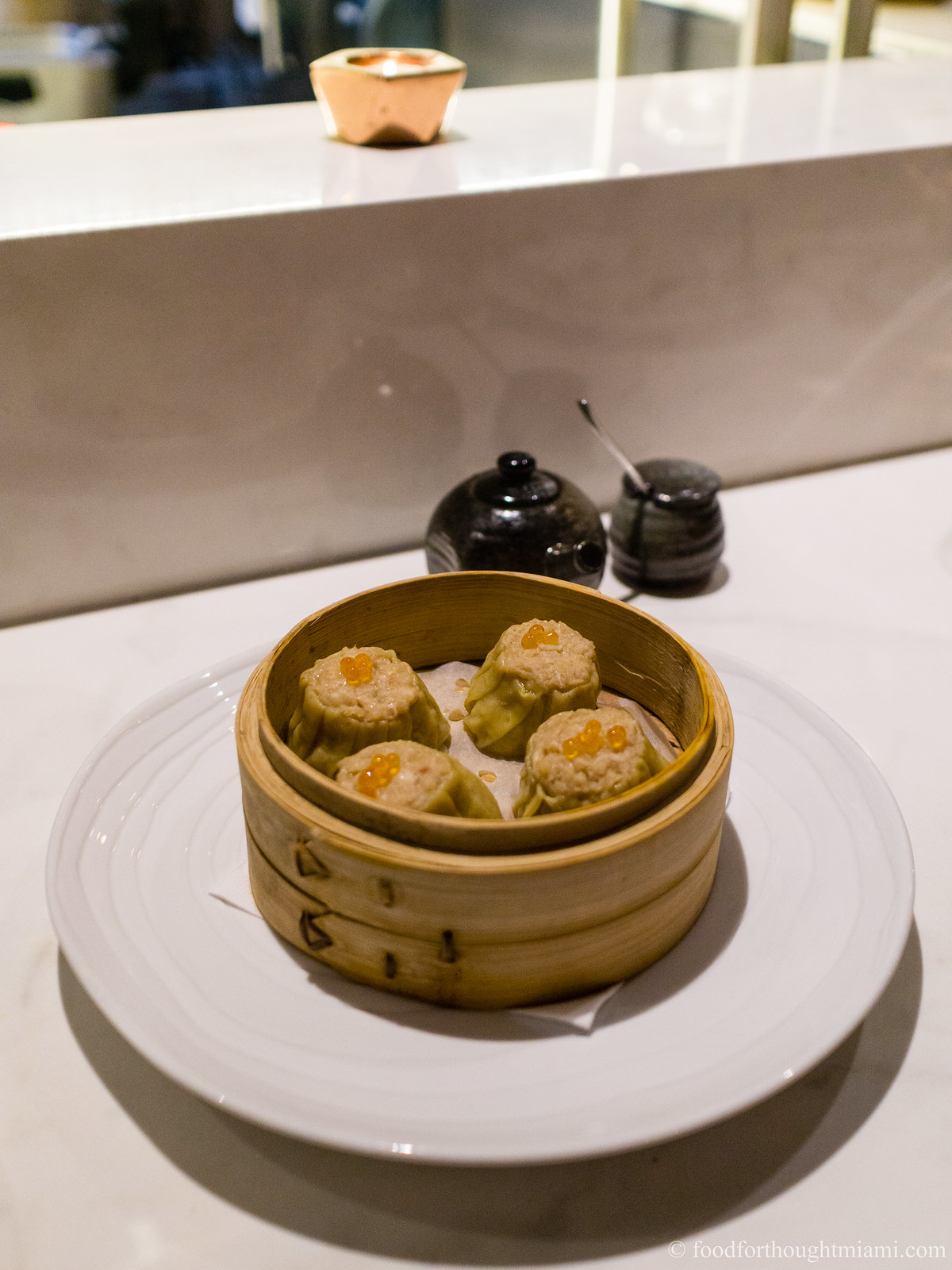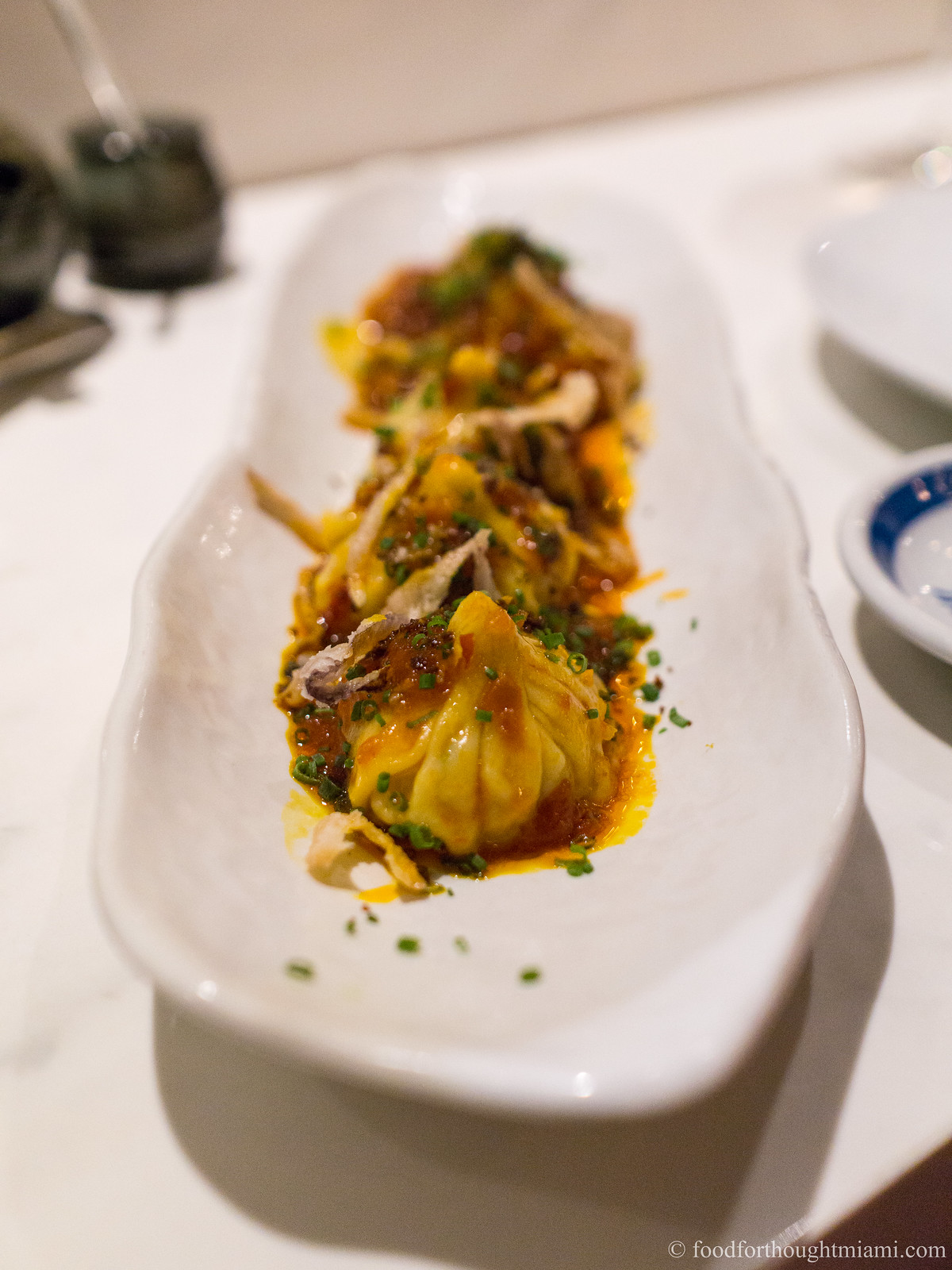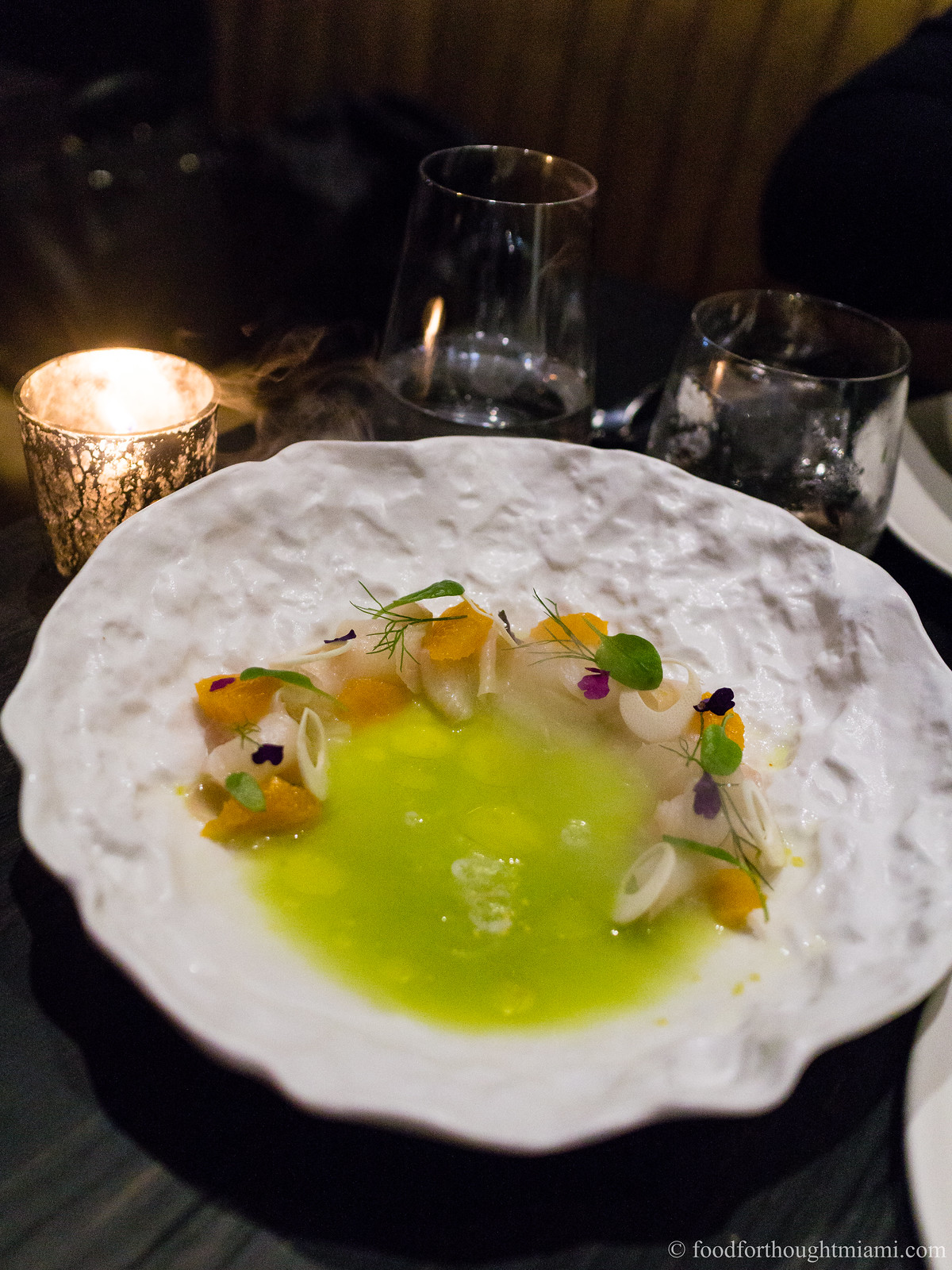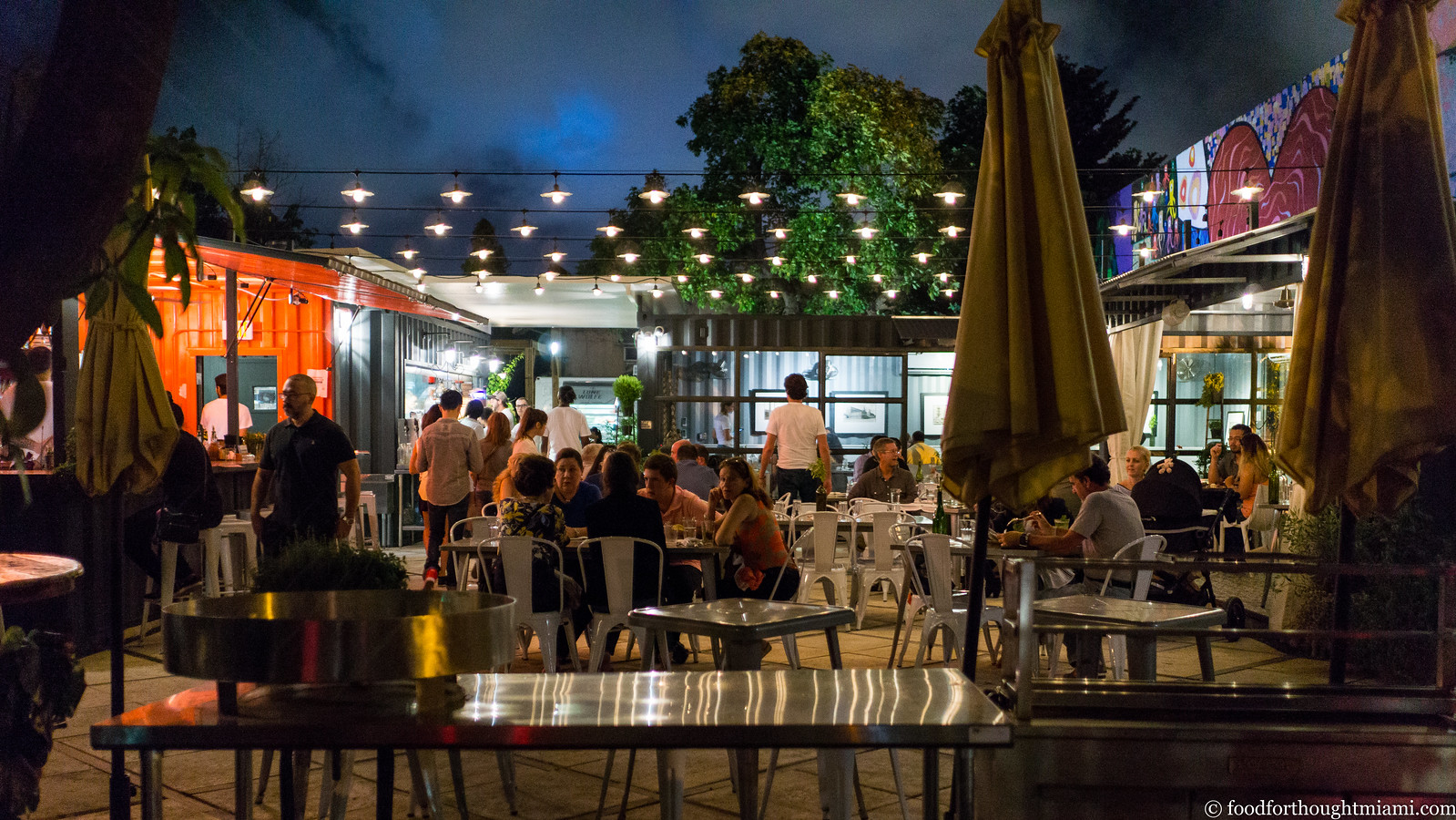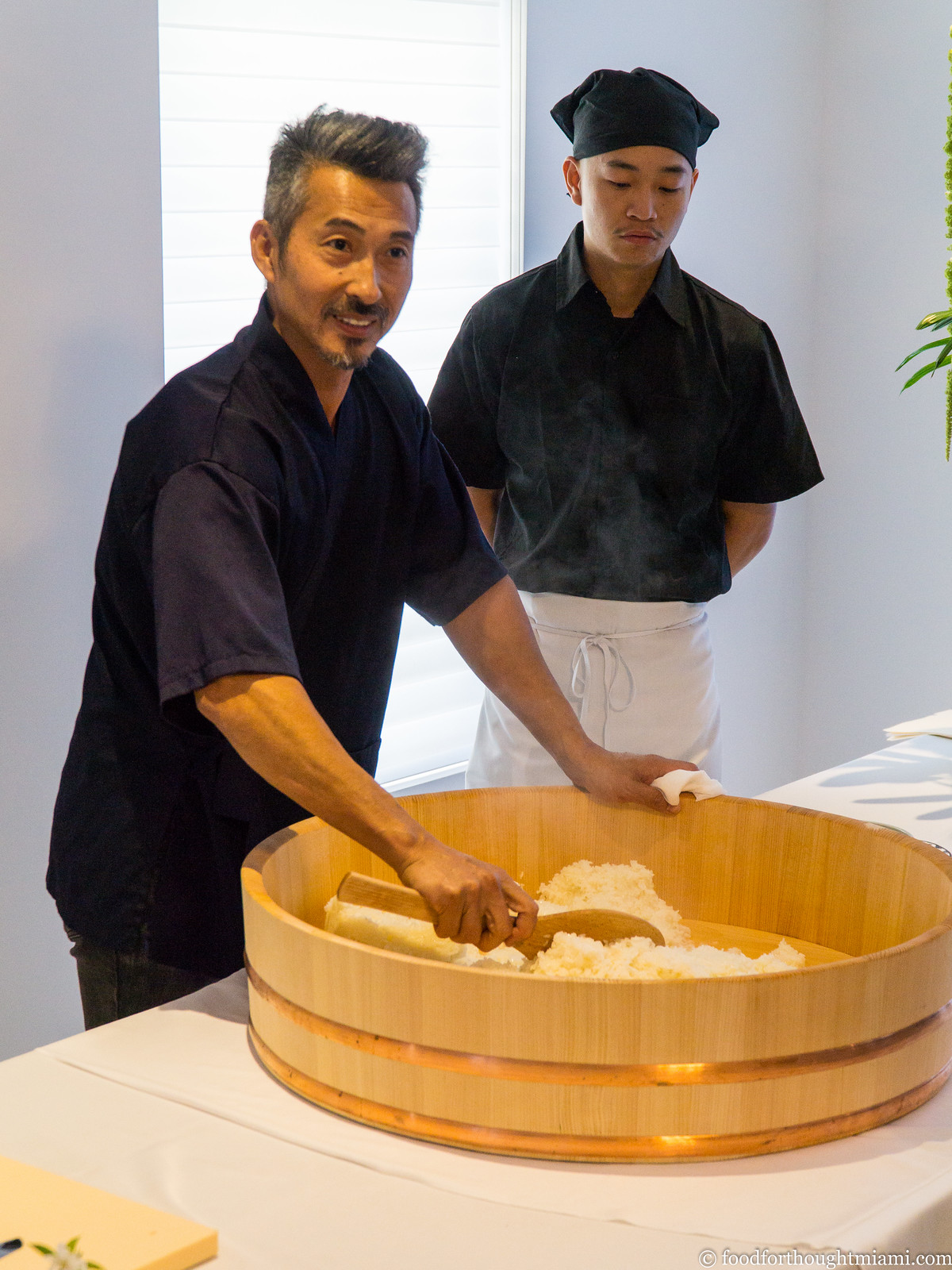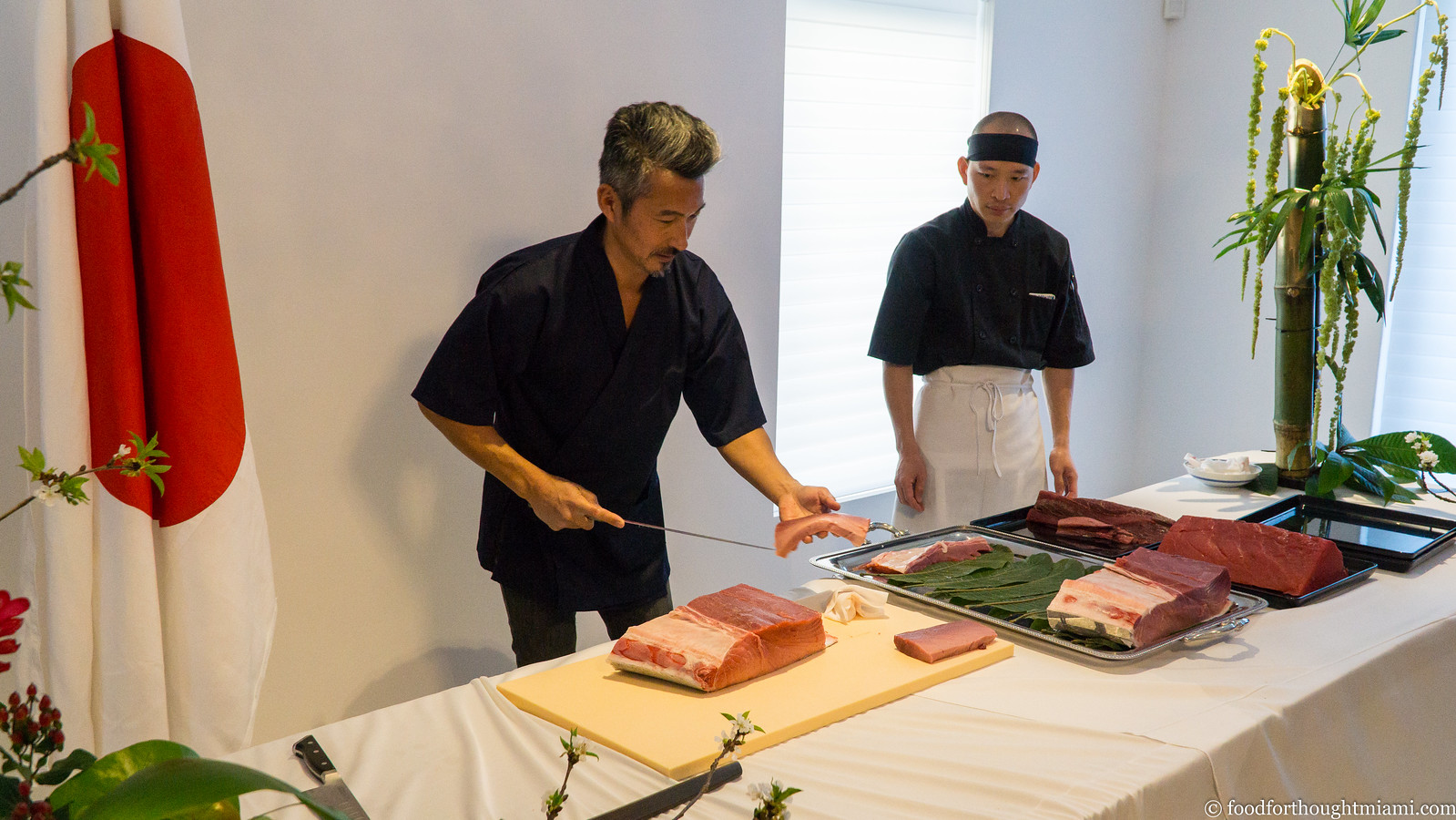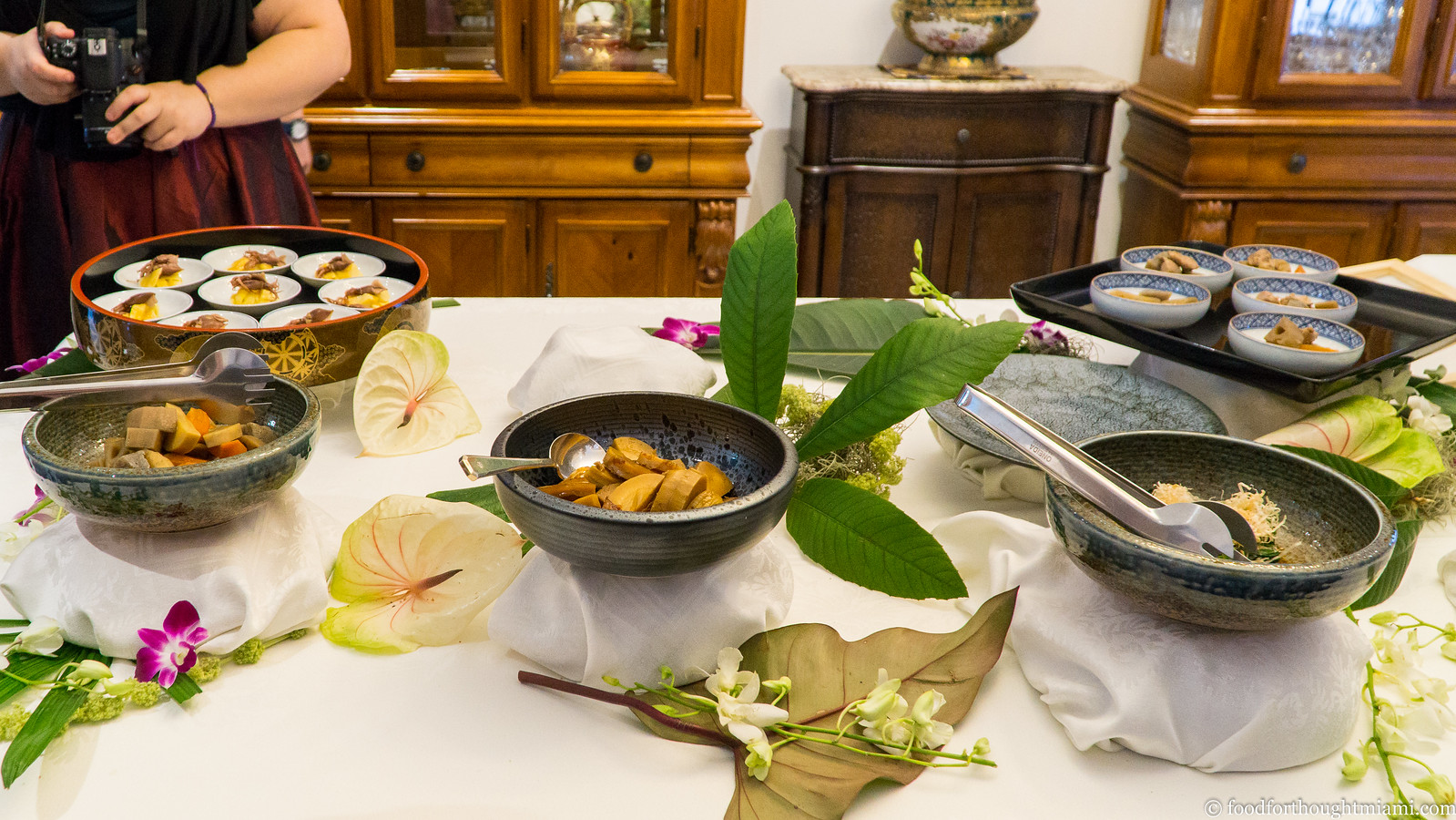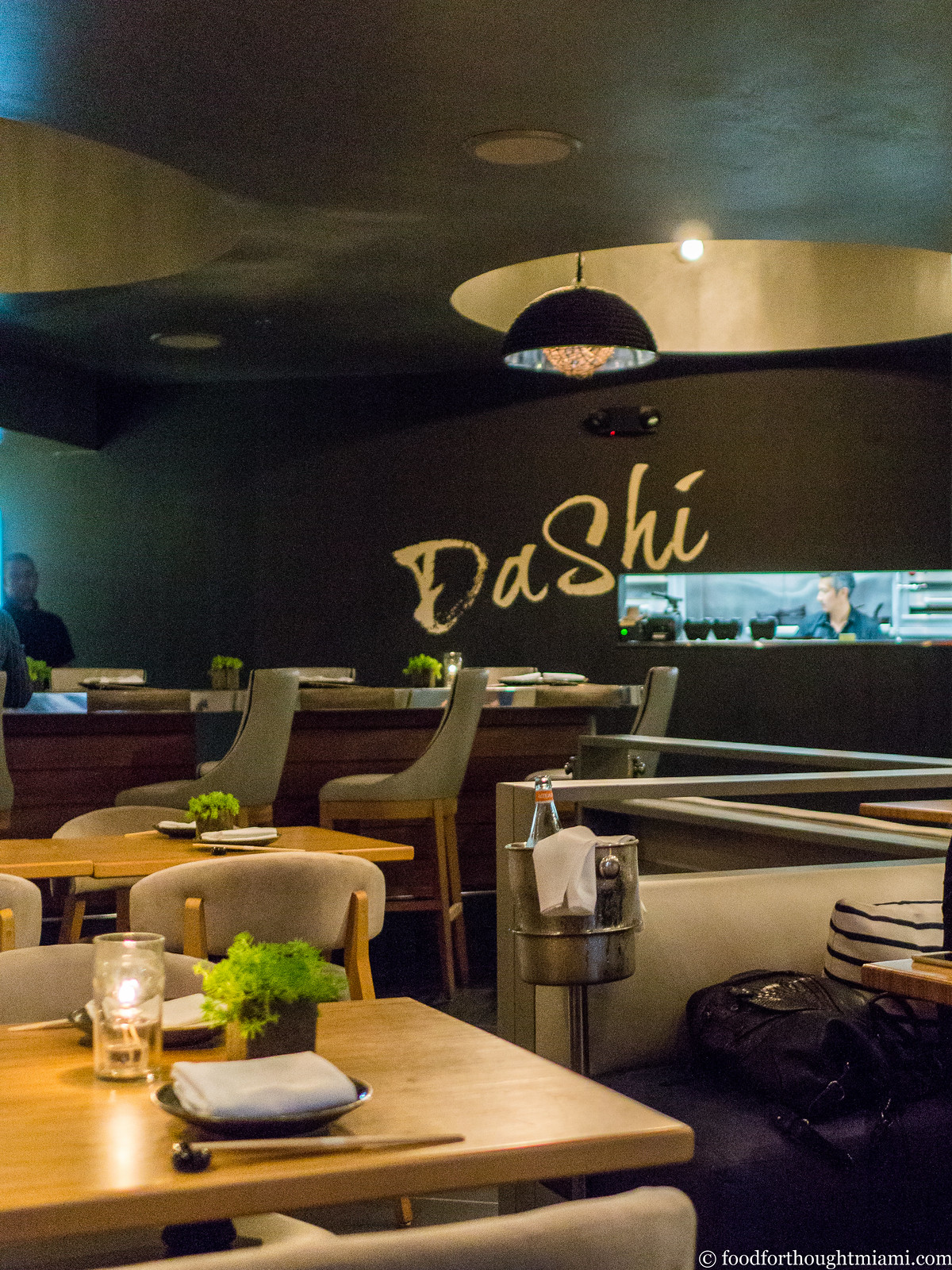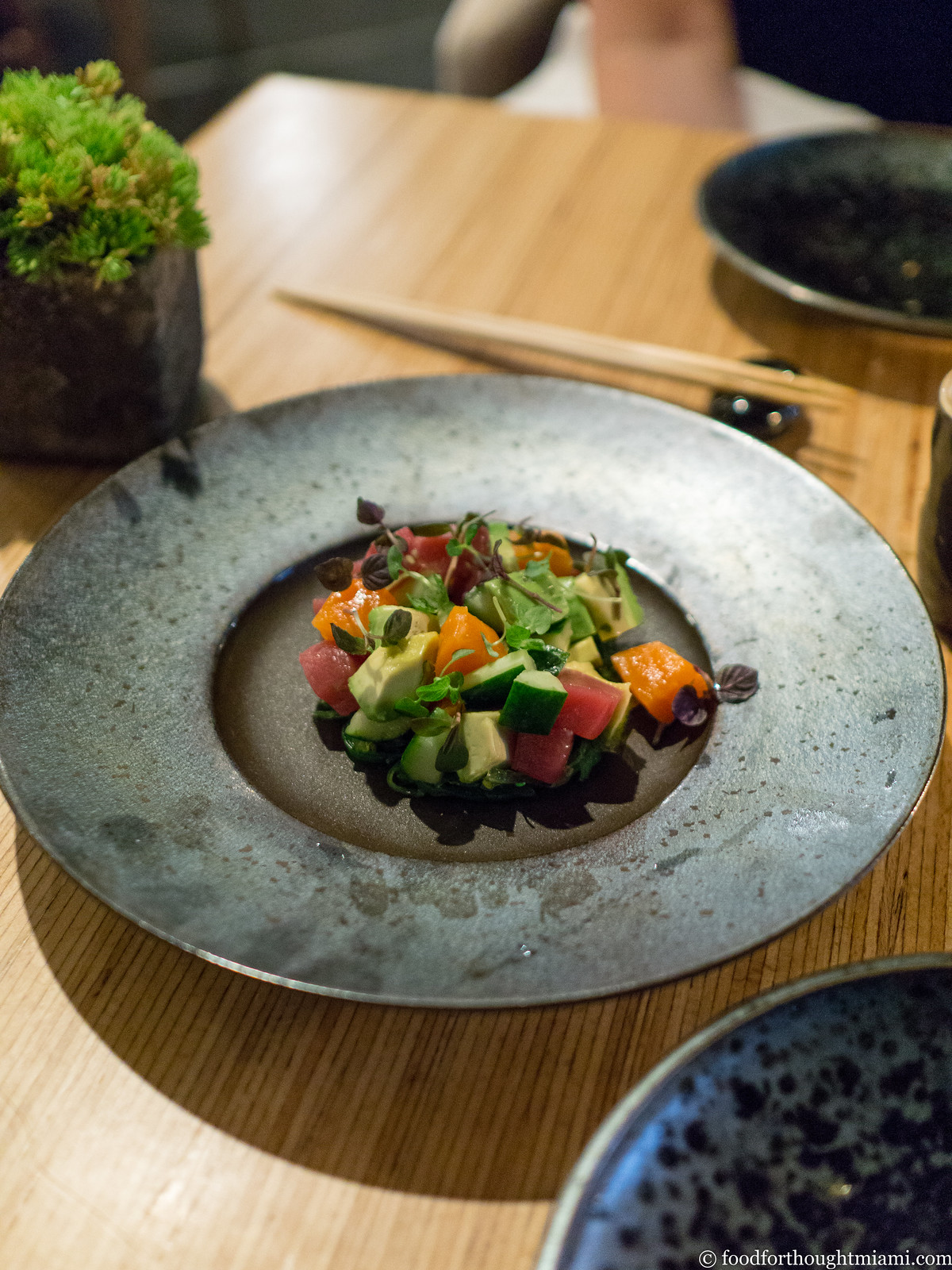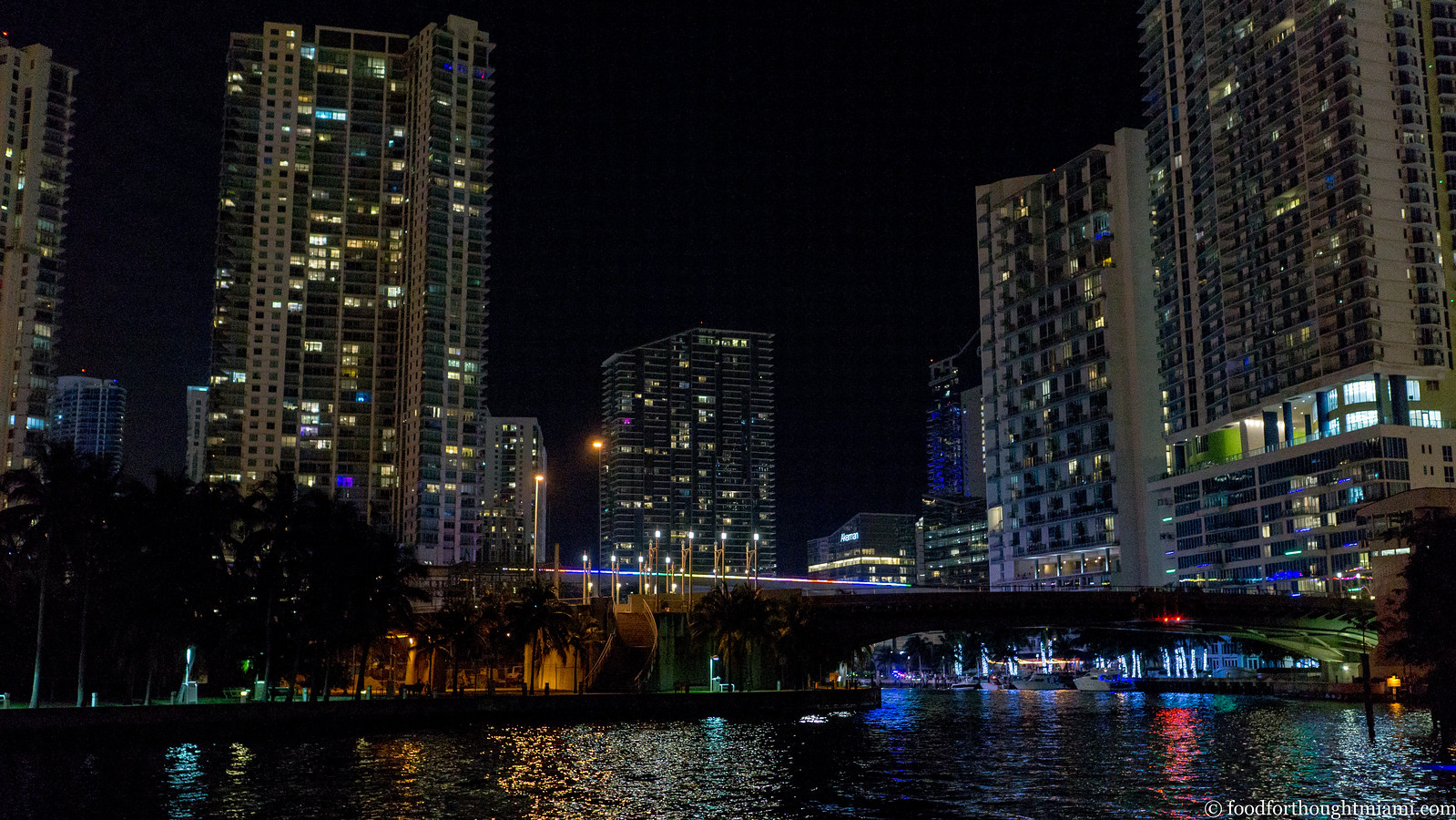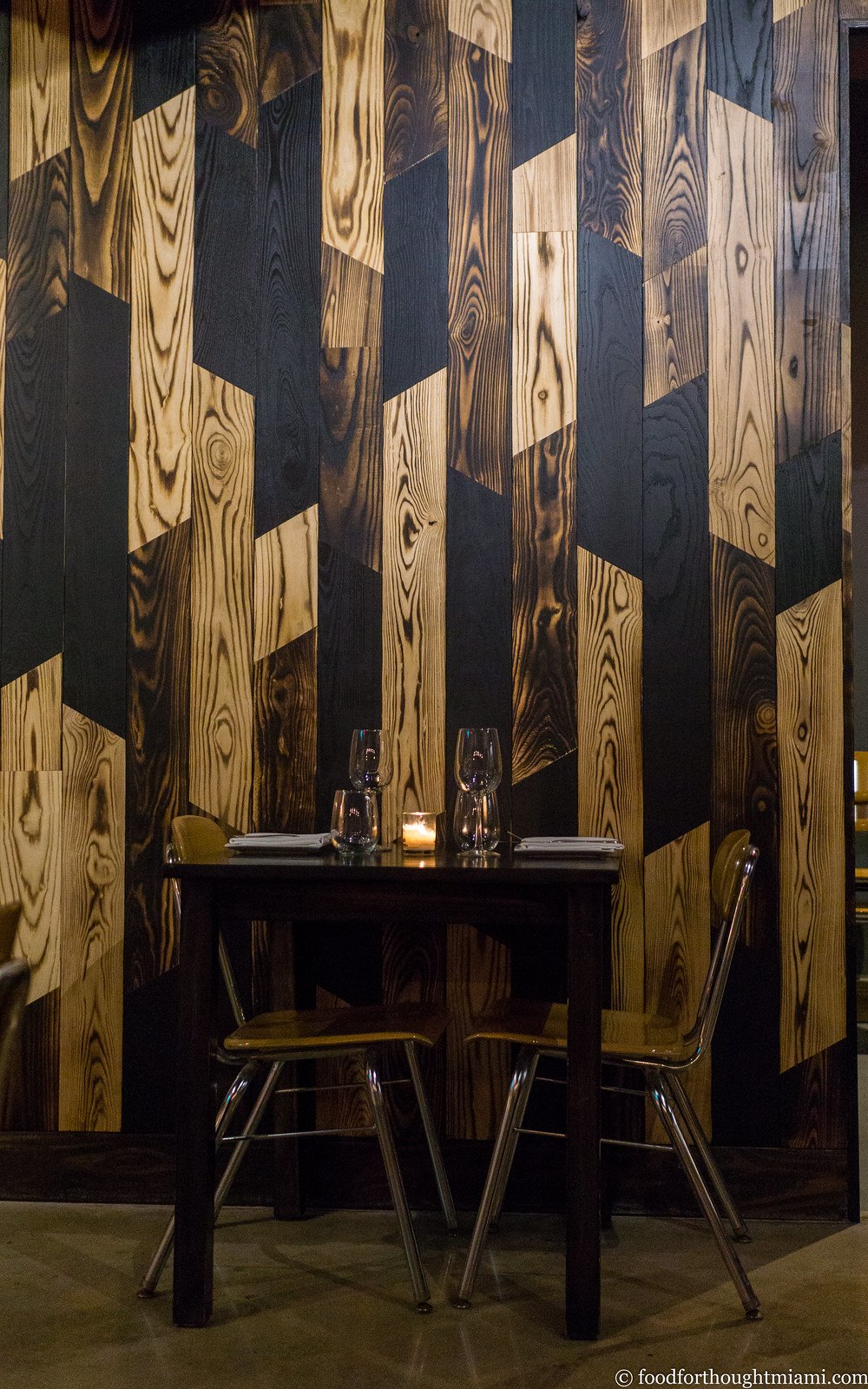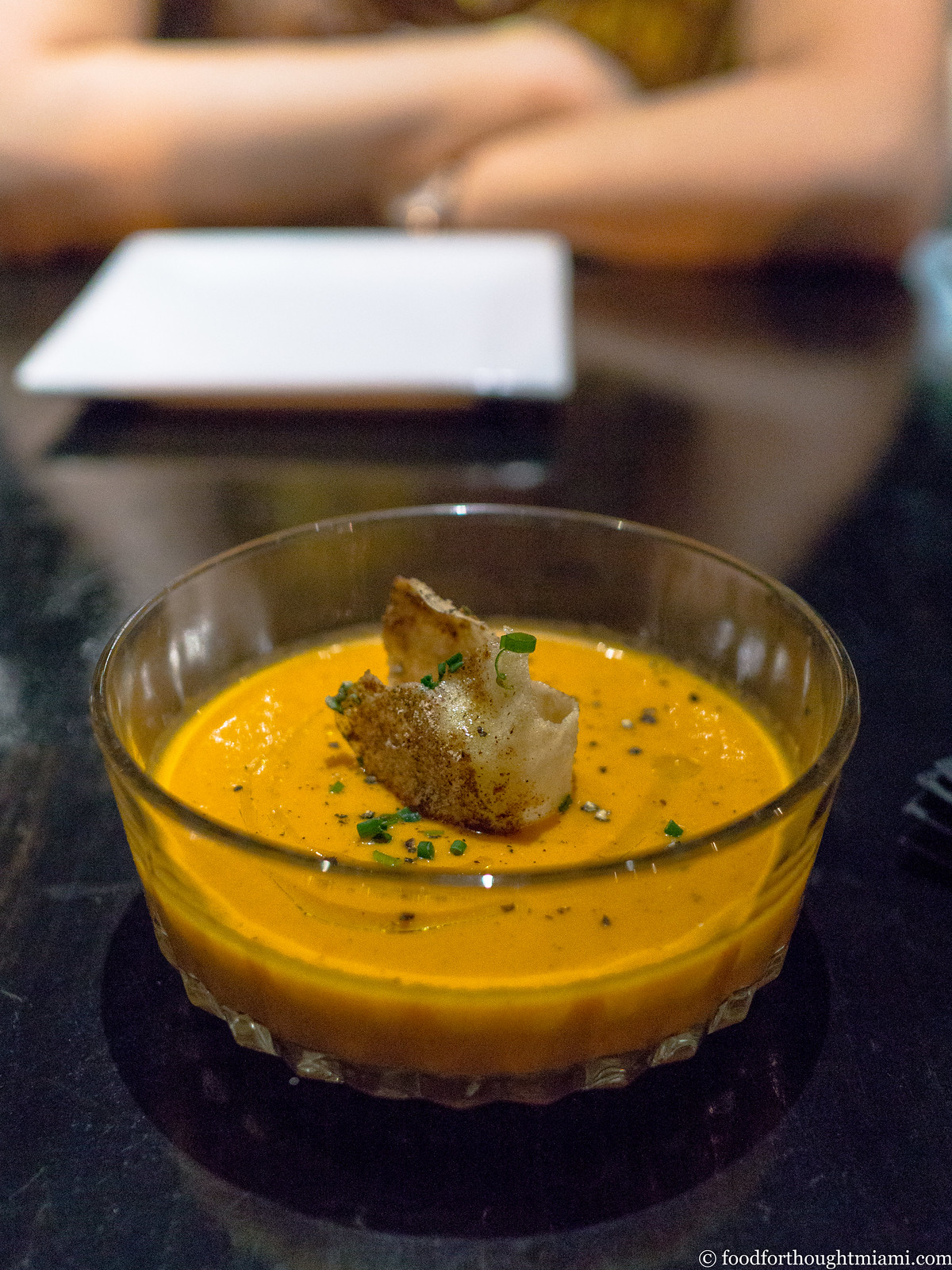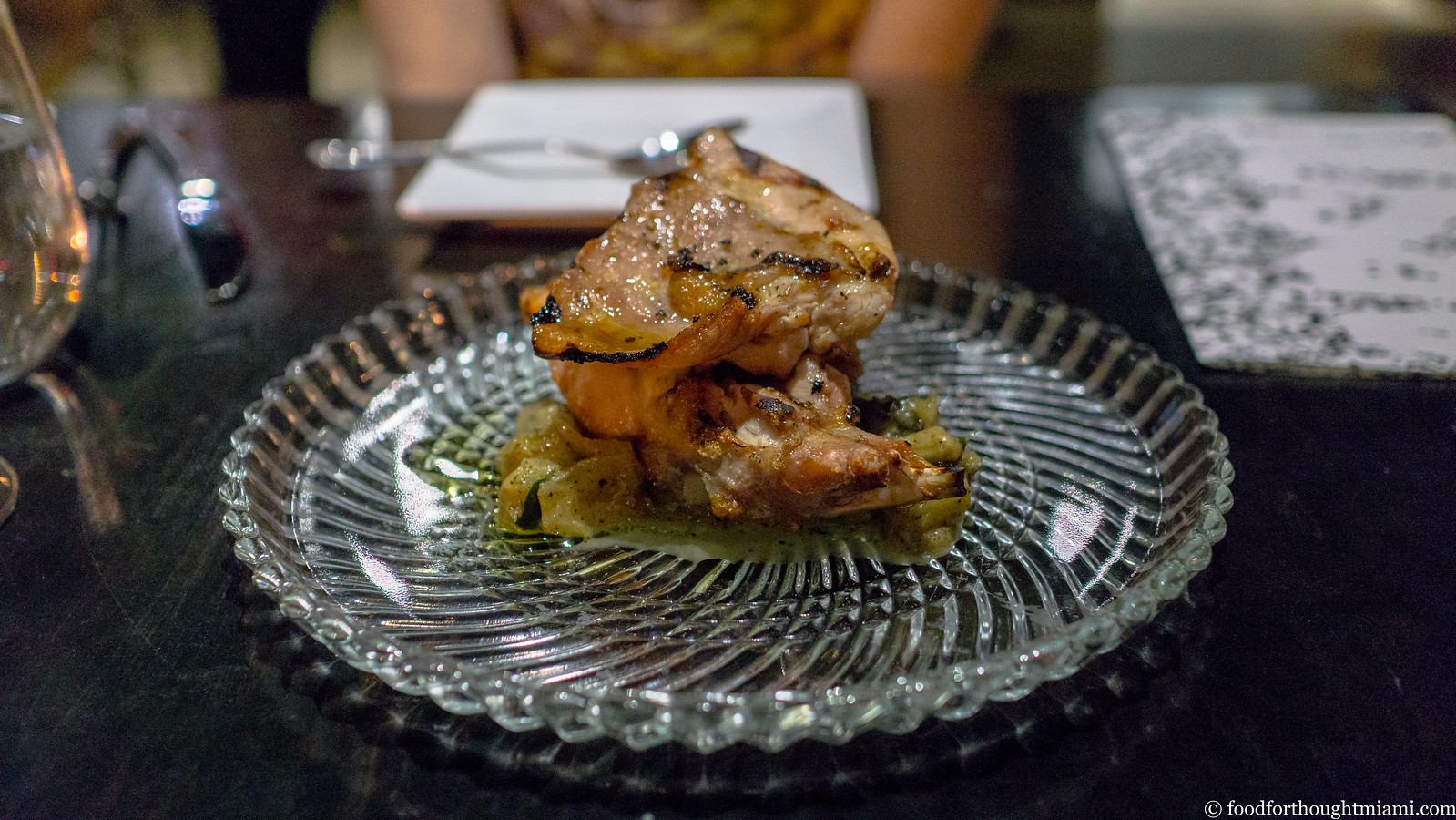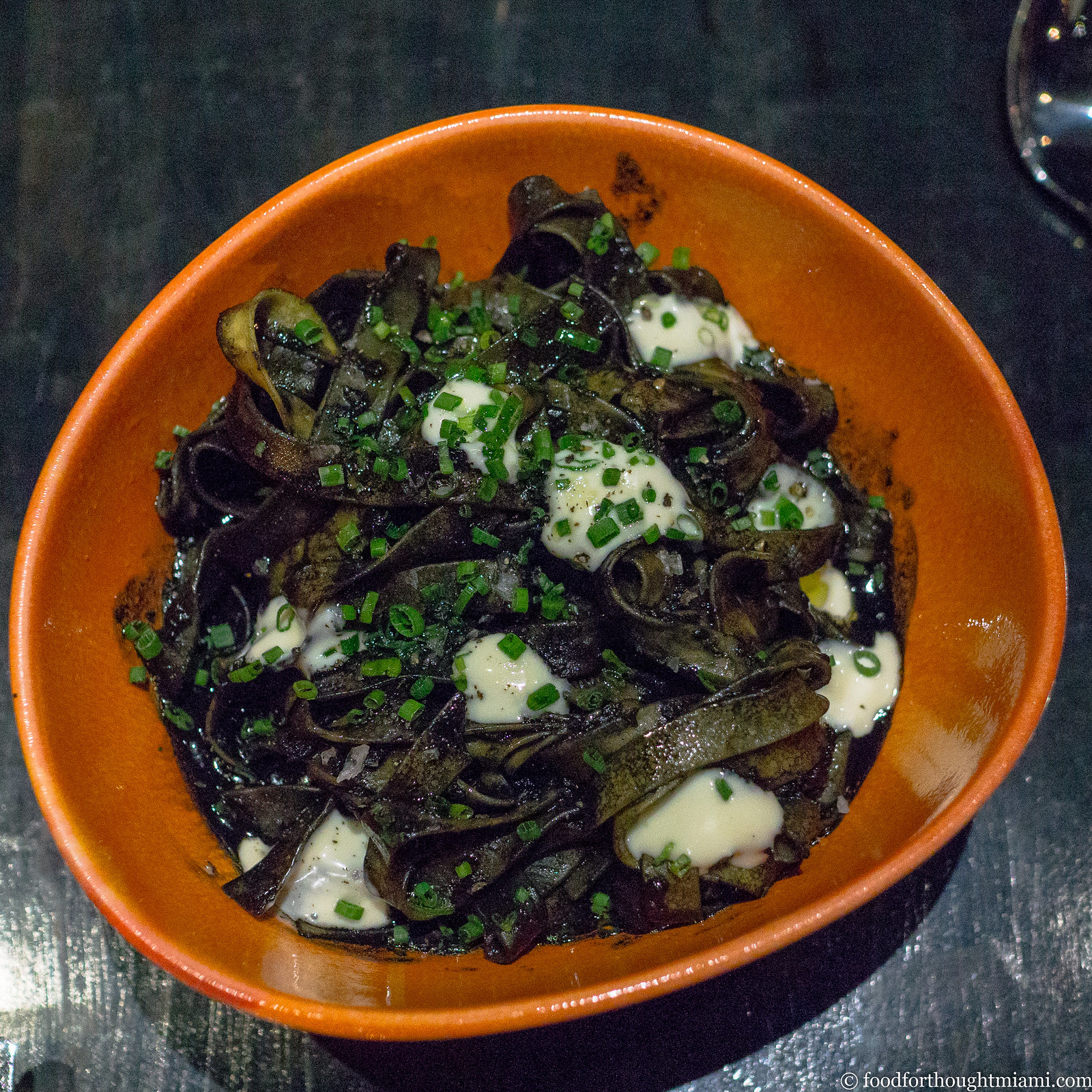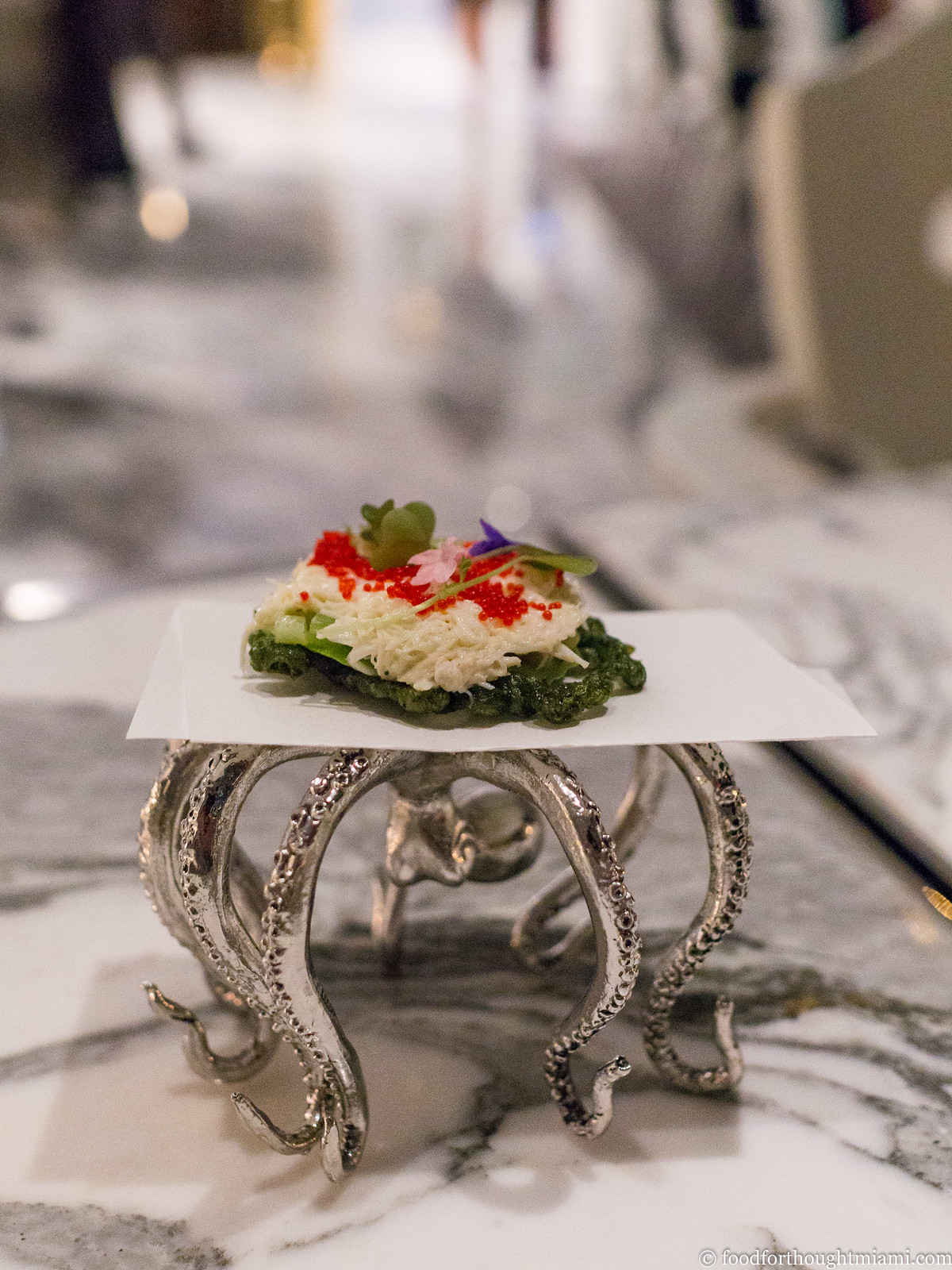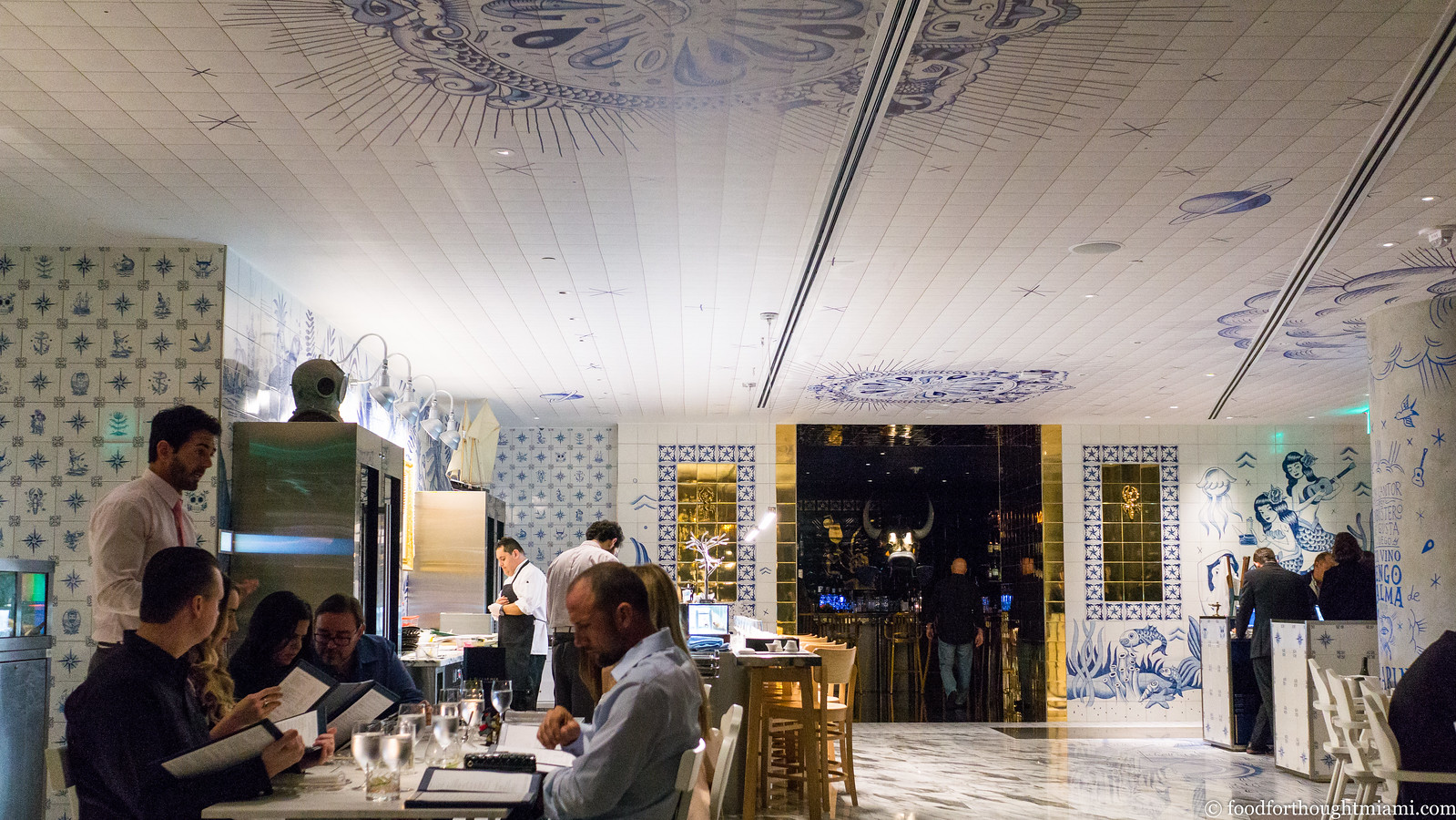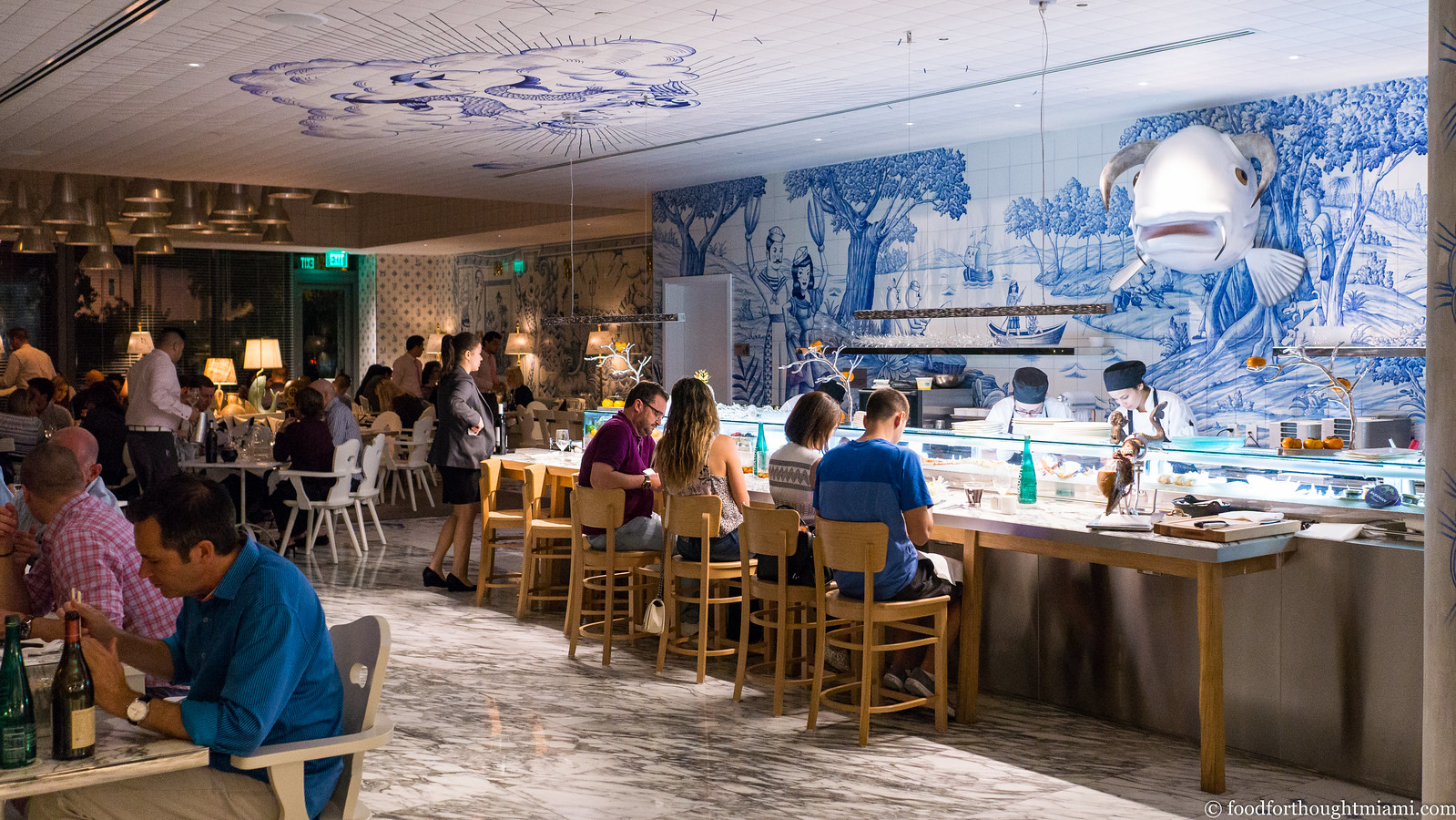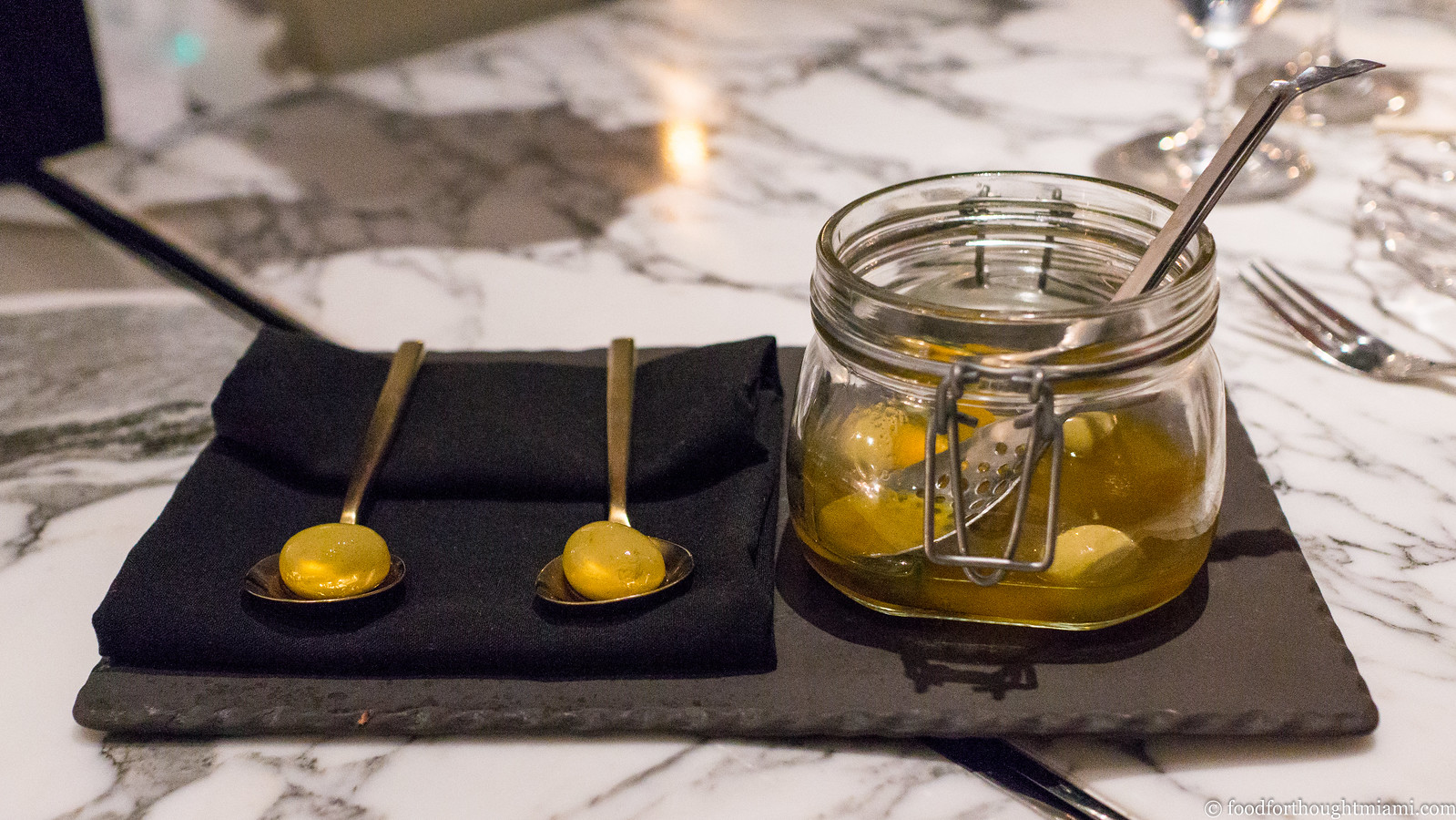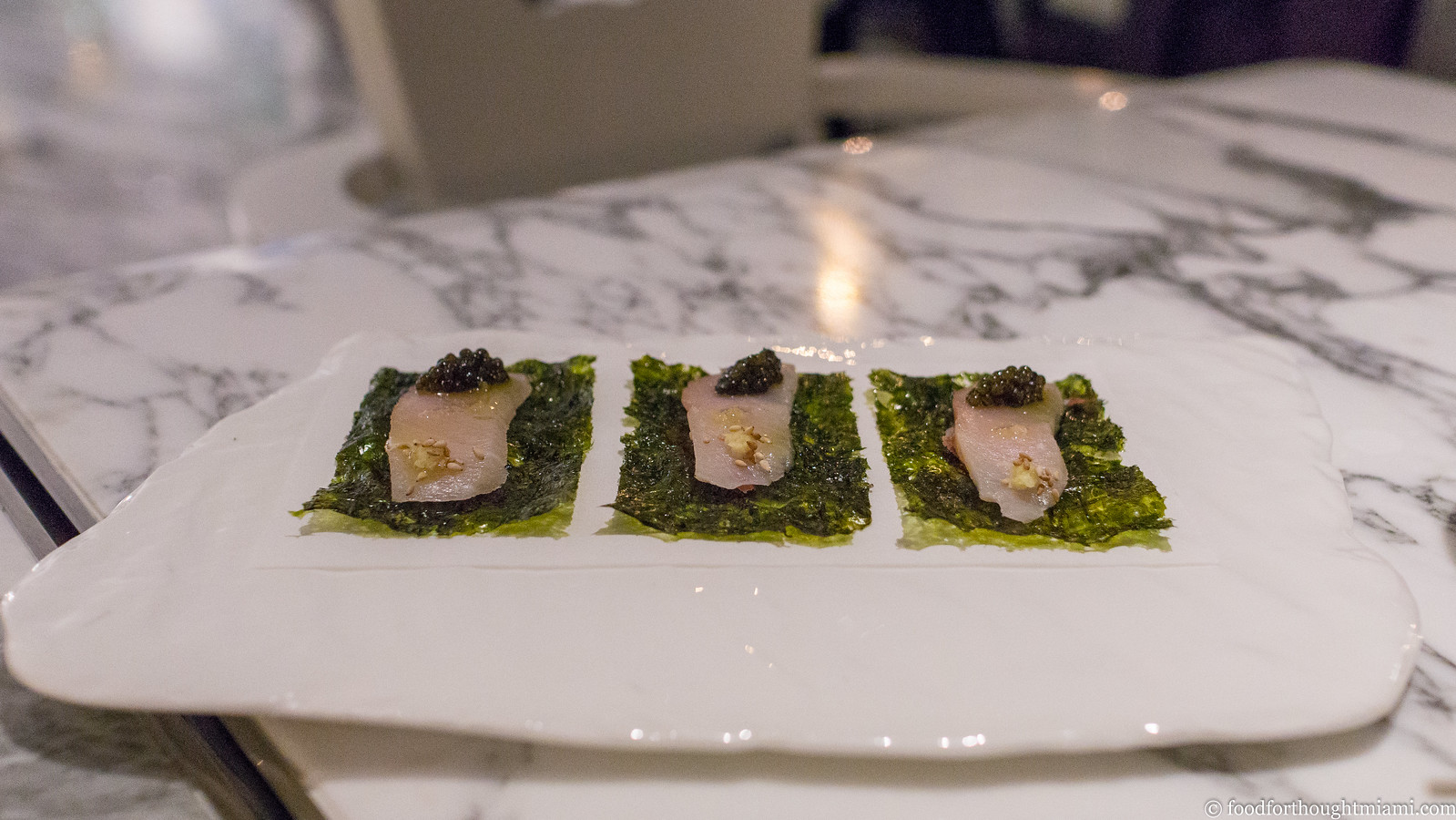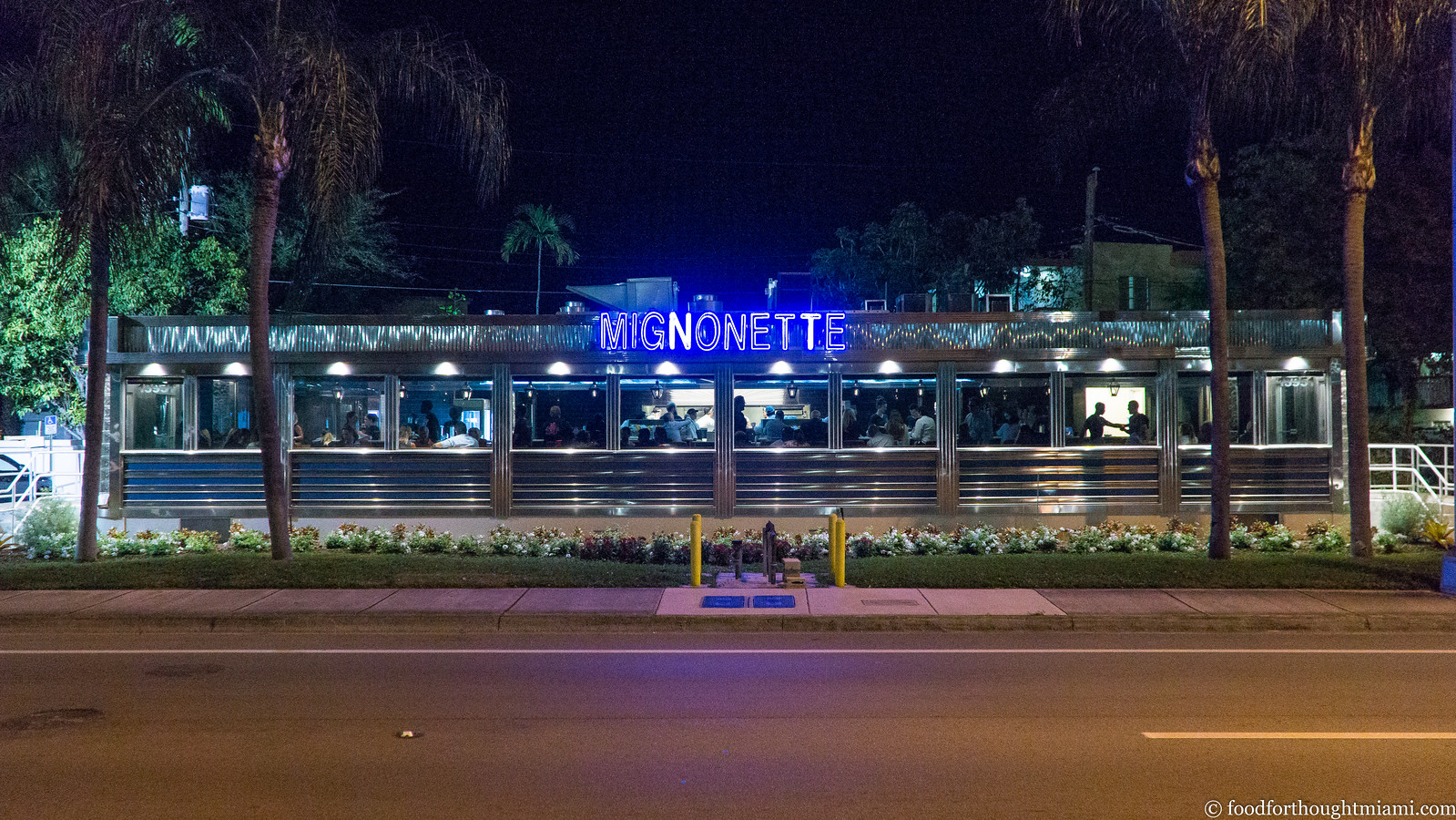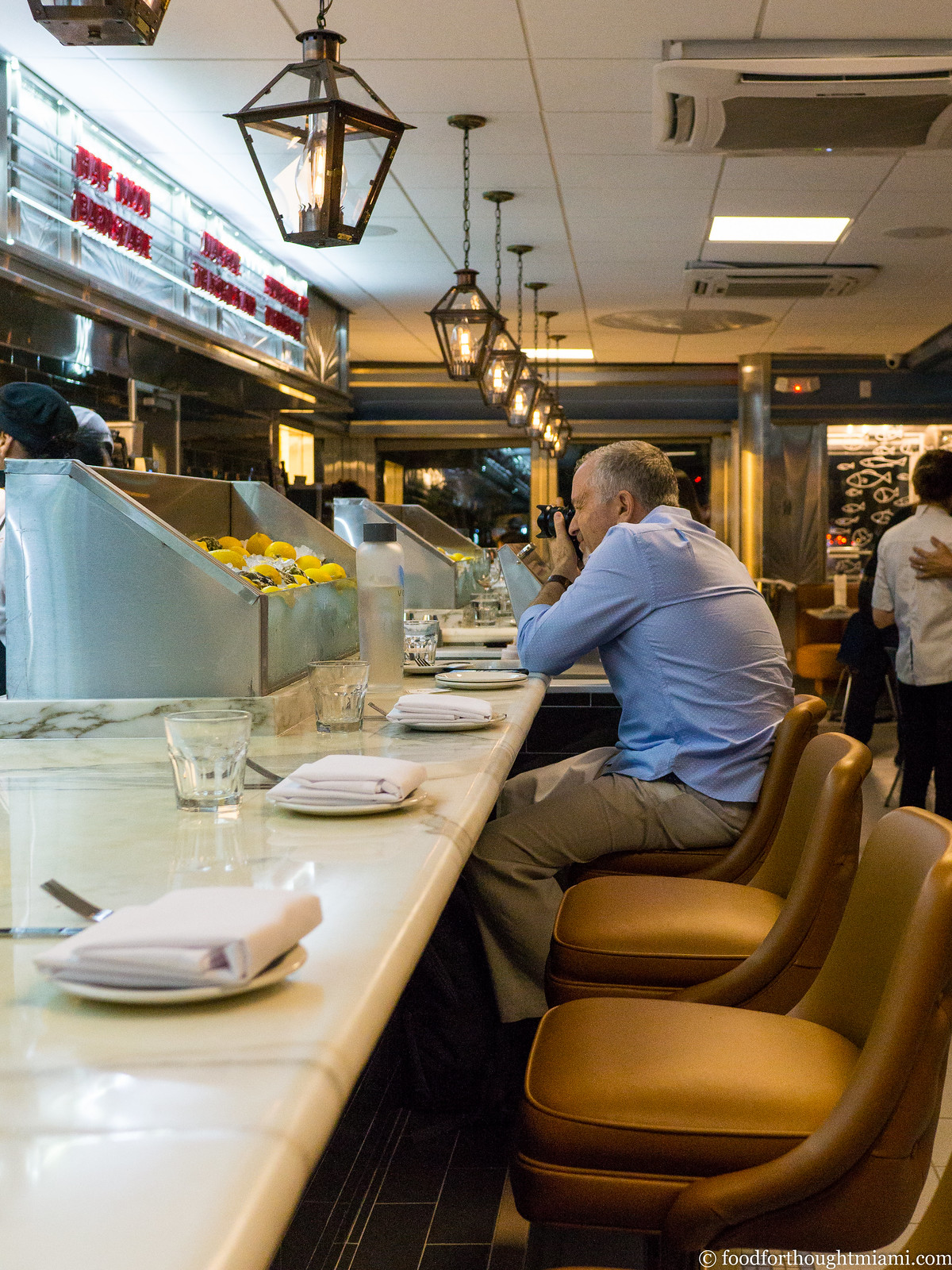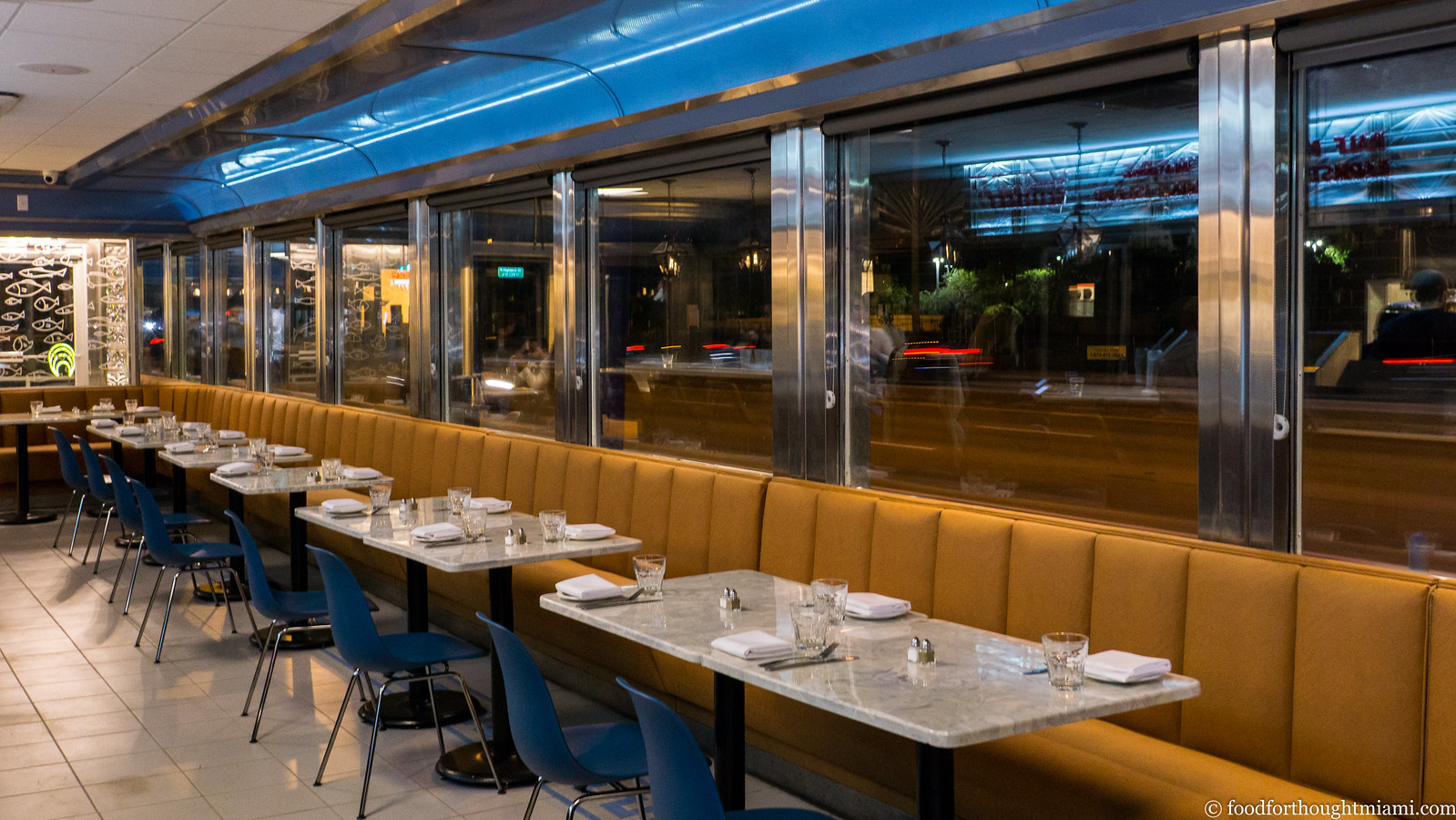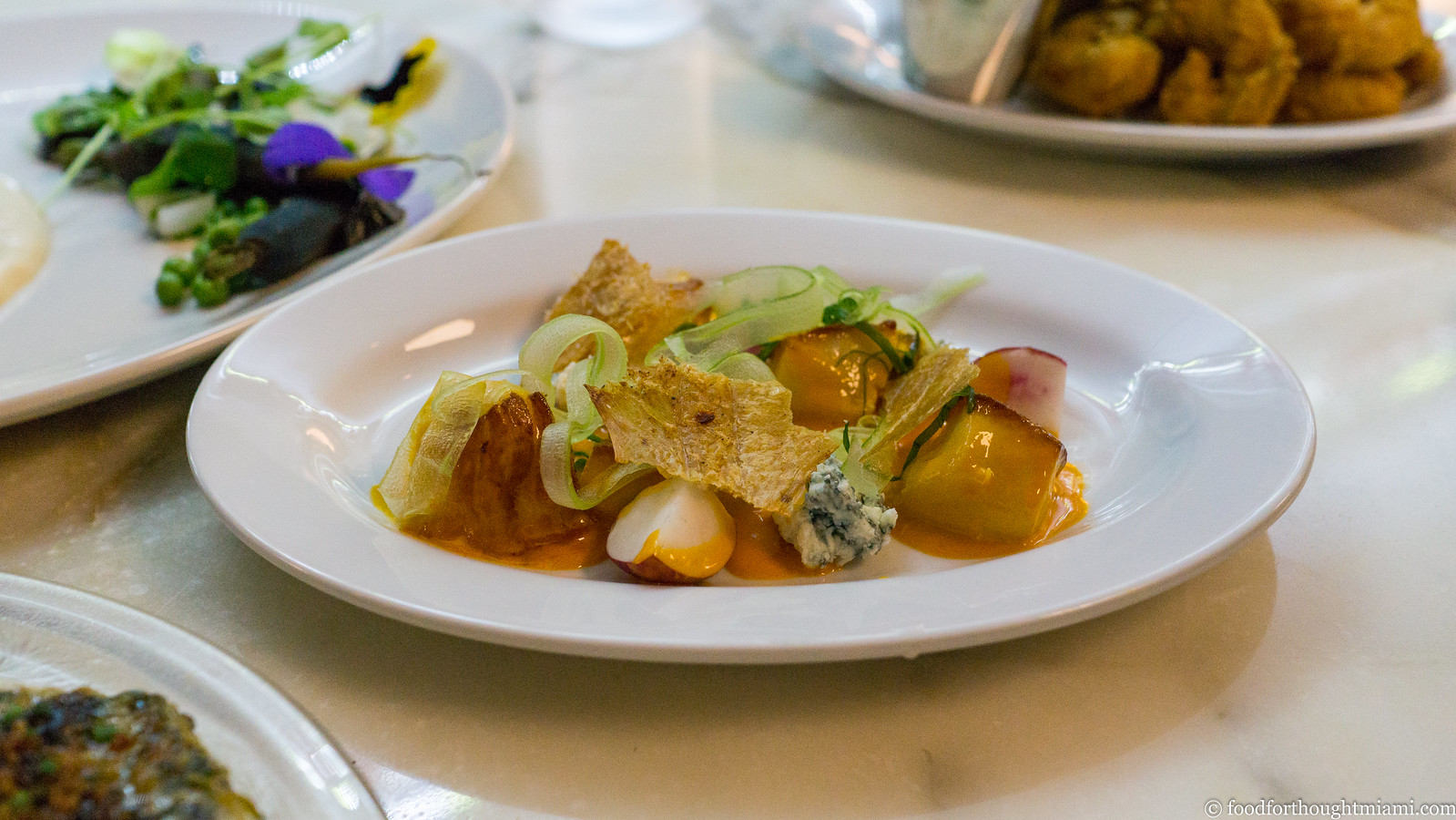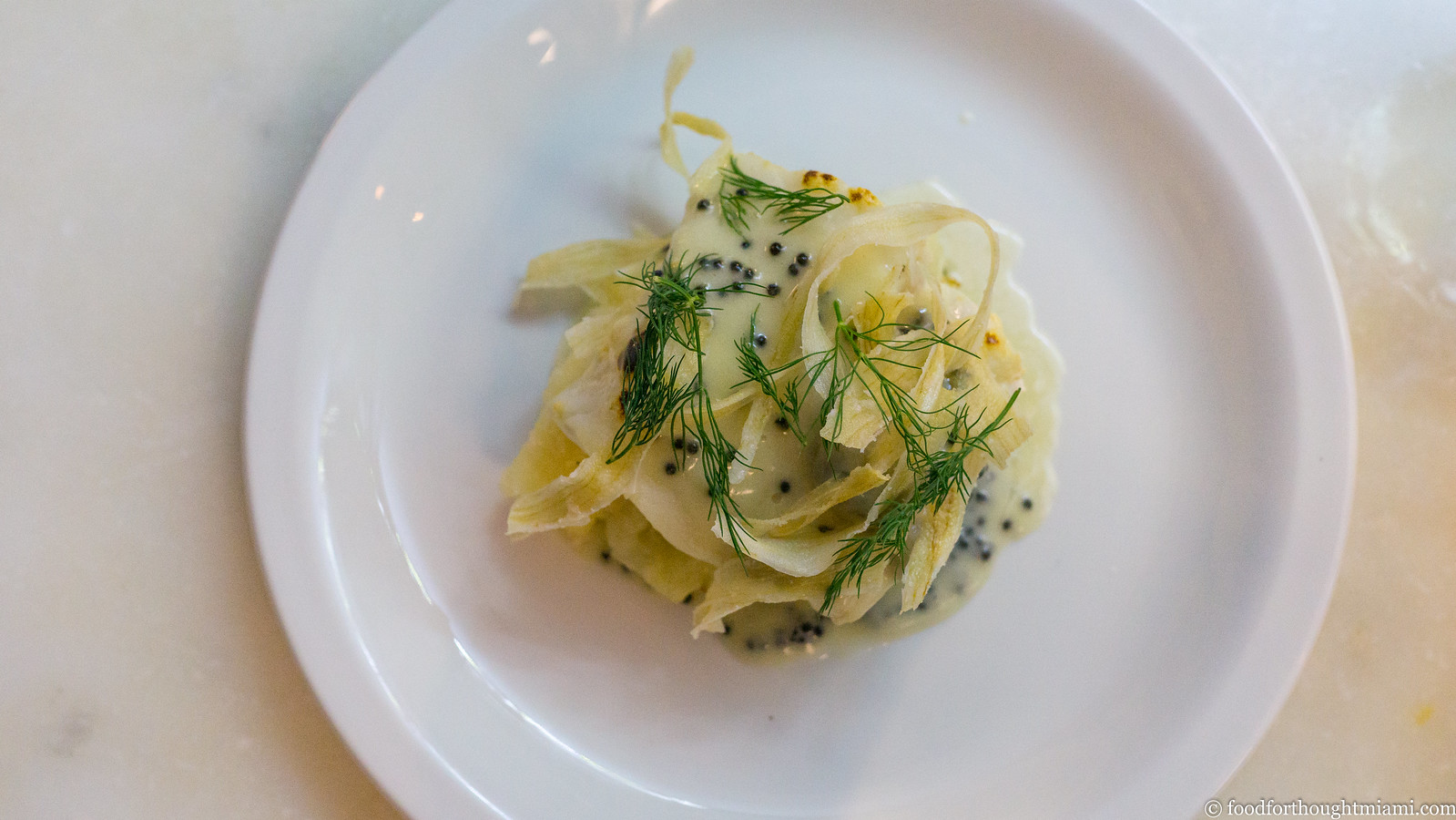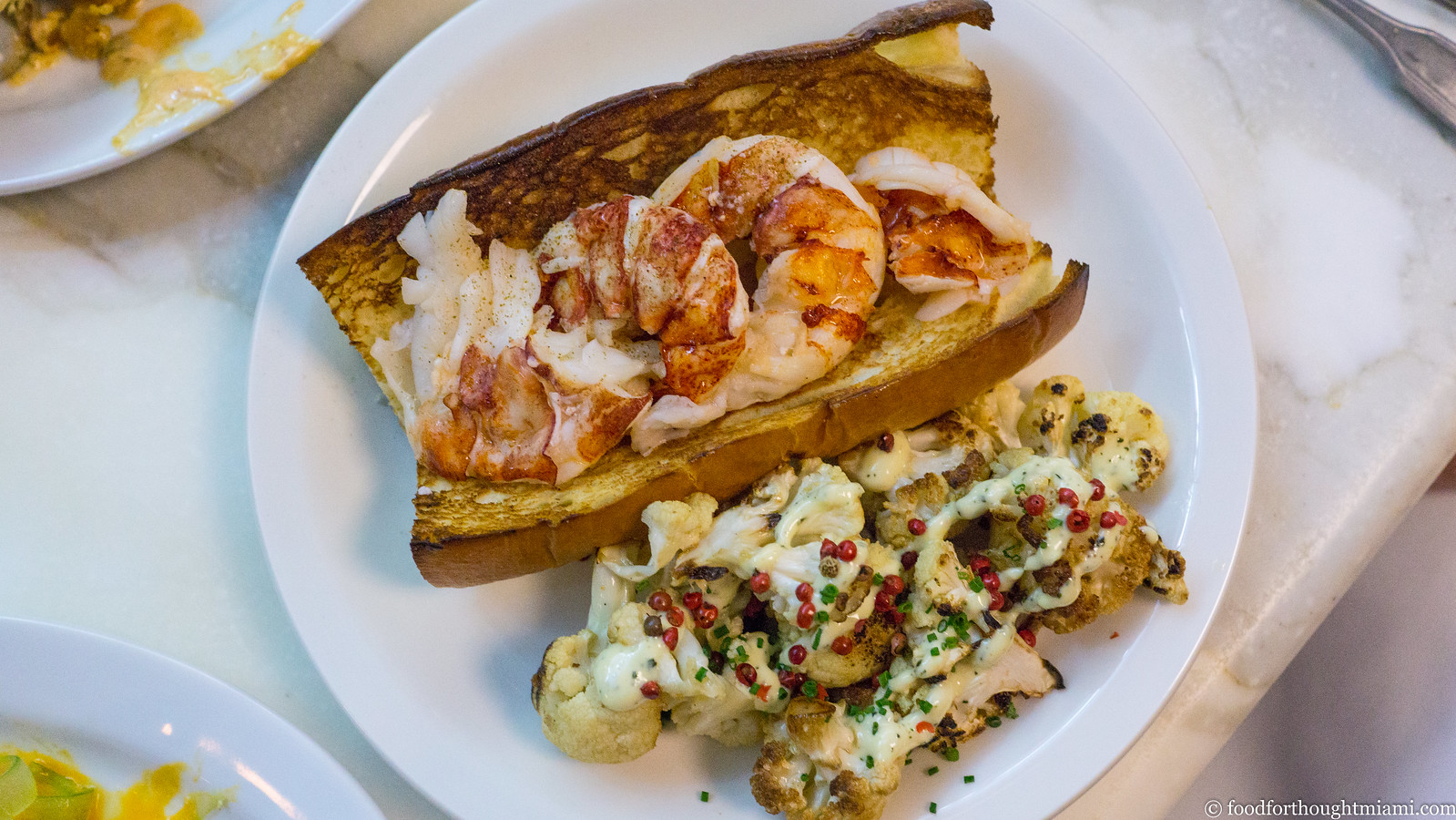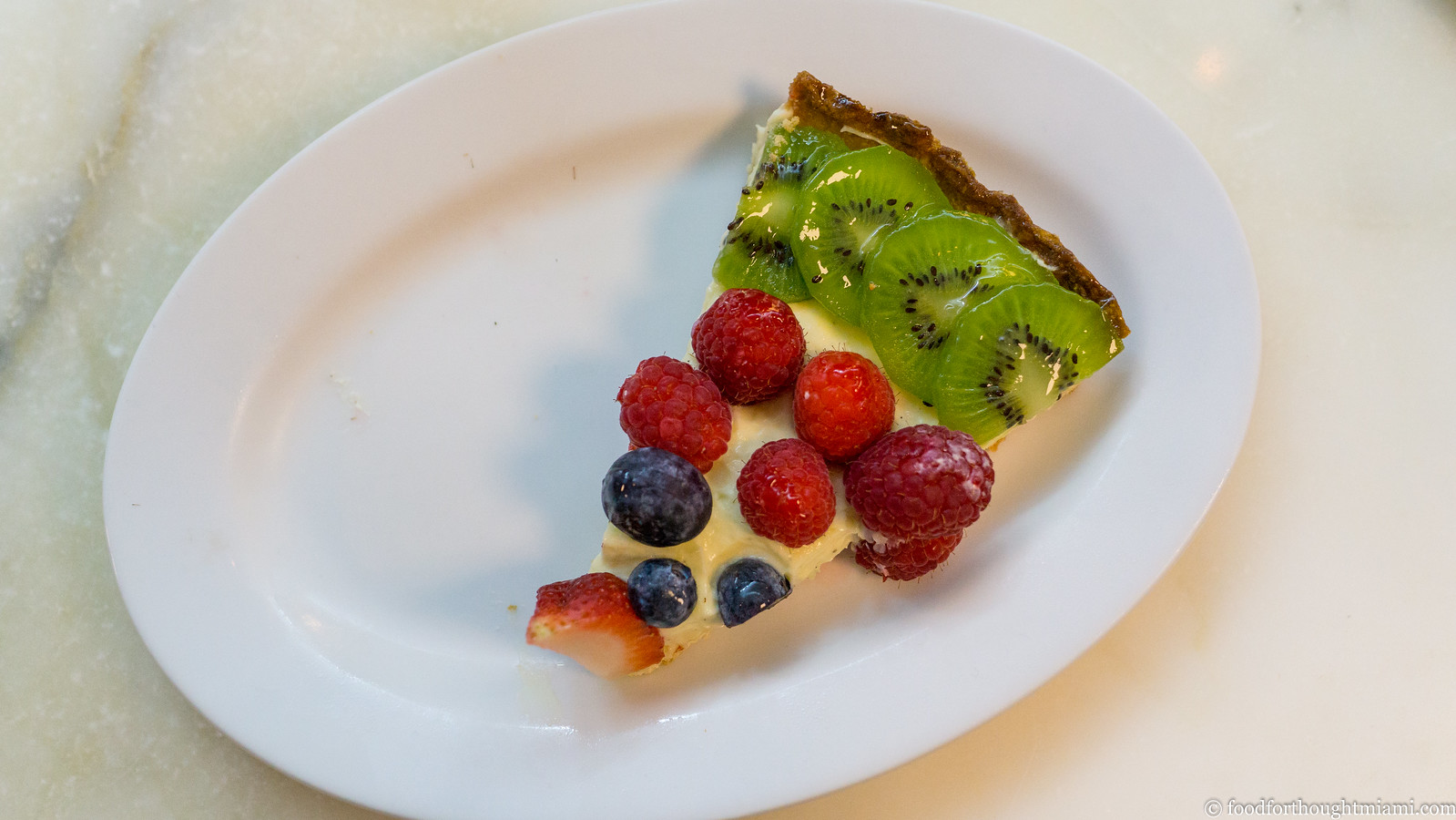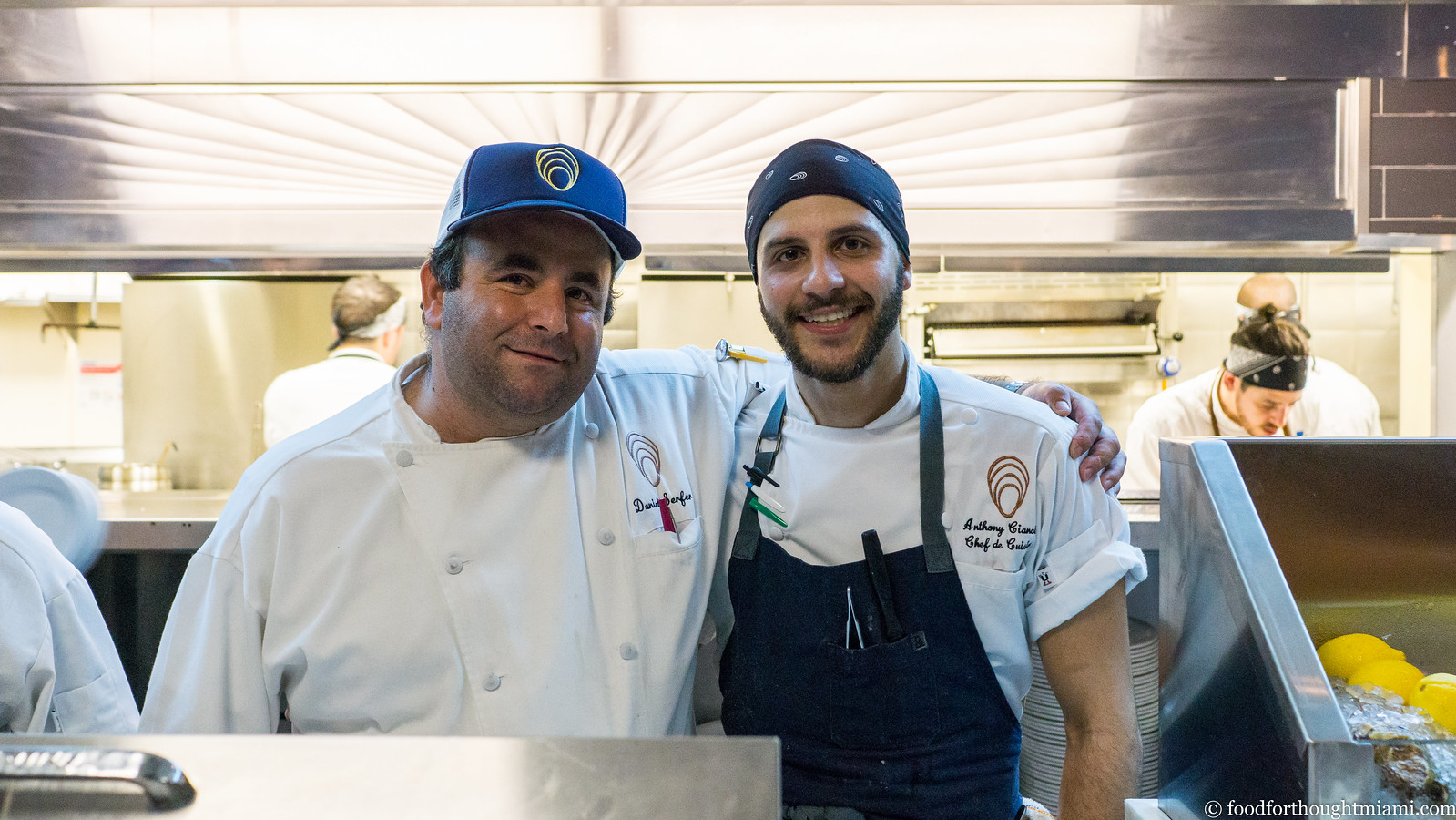Showing posts with label first thoughts. Show all posts
Showing posts with label first thoughts. Show all posts
Wednesday, June 20, 2018
first thoughts: Sixty10 Organic Rotisserie Chicken | Little Haiti (Miami)
In the kitchen, unitaskers are anathema. All those avocado slicers and egg peelers and meat shredders just do the same things you can do with standard kitchen tools while taking up extra space in your drawers. As Alton Brown used to say on Good Eats, "The only unitasker allowed in my kitchen is a fire extinguisher."
When it comes to restaurants, though, I'm a big fan of unitaskers. Focus on just one thing, and you're more likely to do it well. Case in point: Sixty10 Organic Rotisserie Chicken, recently opened in Little Haiti. There are several items on the menu at Sixty10, but they are all essentially variations on one theme: chicken, rubbed with salt and spices, and cooked on a rotisserie until its skin is well-bronzed and its flesh pulls apart in soft, juicy ribbons. It may come as a whole, half or quarter chicken, along with a few different sandwich or salad iterations, but it's all about the bird. And happily, it's a really tasty bird.
(You can see all my pictures in this Sixty10 flickr set).
On a first-time lunch visit last week, I got the Sixty10 sandwich: pulled rotisserie chicken meat, a tangle of caramelized onions, coins of fingerling potatoes slippery with chicken jus, all smooshed inside a kaiser roll It was simple, straightforward, and delicious. The seasonings are subtle, not overpowering; it tastes like chicken, but actually like chicken, not just a bland blank canvas. Having said that, a smear of mustard or a daub of hot sauce would probably do it wonders.
I'll have to make a return visit to bring a whole roasted chicken home for the family, which can be had with two sides (options include those roasted potatoes, a creamy, tangy cole slaw, brussel sprouts or green beans) and two sauces (could be jalapeño jam, curry sauce, or pikliz, a nod to the Little Haiti neighborhood, among others) for $34. That's about 50% more than you'd pay for a commodity chicken family meal at Pollo Tropical and it's probably about 200% better.
There's not much to the place right now, which used to be a Haitian Creole take-out joint: a window into the kitchen where you place your order, a covered patio with some tables and benches if you want to "dine in." But there's a huge, sprawling yard out back, partly shaded by live oaks spreading their branches over from the neighboring property, and the owners have bigger long-term plans: live music (a stage is already set up), a chickee hut (plans have been filed with the city), wine and beer in a picnic-style atmosphere (there's no liquor license yet, so for now they're sometimes pouring wine for free).
(continued ...)
Sunday, February 4, 2018
first thoughts: Shelley's | South Miami
 |
| Sorry We Missed You |
She's kind of hard to describe. (You can see all my pictures in this Shelley's - South Miami flickr set).
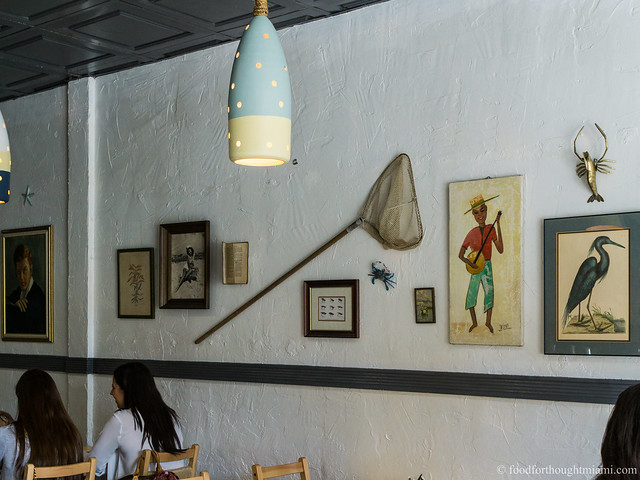 |
| Shelley's - dining room |
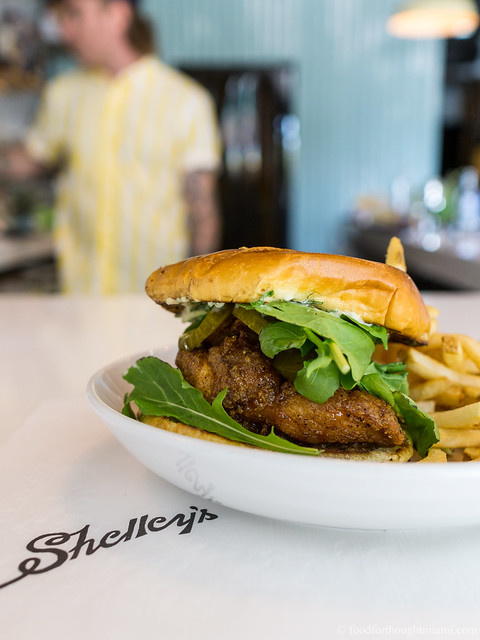 |
| fried chicken sandwich |
 |
| shrimp Scotch egg, grits, kimchi collard greens |
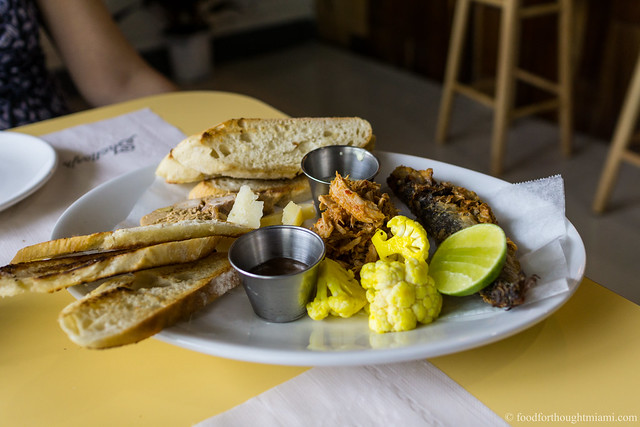 |
| seafood charcuterie platter |
Sunday, December 24, 2017
first thoughts: No Name Chinese | South Miami
2017 has been the year of the "to-do list" for me. The agenda of new restaurants I've been meaning to try continues to grow, and unlike the past several years, the usual forces of attrition (i.e., closures) haven't whittled it down quite as much as usual. Making it even more challenging, those openings haven't been limited to the ever-popular trifecta of Wynwood, South Beach and Brickell. It's good news for the residents of the outer bands of Greater Miami; it's a challenge for those trying to keep up with all the latest additions.
Witness, for example, No Name Chinese, which opened late this spring in South Miami, on a quiet corner behind the Shops at Sunset Place. No Name[1] is the second spot from the team of wine buff Heath Porter and manager Craig DeWald (their first is Uvaggio wine bar in Coral Gables), who decided they wanted to open a place serving contemporary Chinese cuisine using local ingredients paired with unusual wines.[2] They brought in Pablo Zitzmann to run the kitchen, who was last seen at the now-closed Trust & Co. in the Gables, and before that worked with Jean-Georges Vongerichten and Jeremy Ford at Matador Room, Ricky Sauri at Nobu and then Bloom in Wynwood, and Michelle Bernstein at Sra. Martinez, among others.
(You can see all my pictures in this No Name Chinese flickr set.)
Zitmann's menu at No Name is inspired by traditional Chinese dishes and flavors, but takes plenty of liberties. So there's a crispy turnip cake (law bok gow), a Chinese dim sum standard, but it's done in the style of a Japanese okonomiyaki topped with lap cheong sausage, shiitake mushrooms, Kewpie mayo and katsuobushi, the shavings of smoked, dried skipjack tuna wriggling in the heat. Turnip cake and okonomiyaki are a couple of my favorite things, so this makes me very happy.
Shrimp toast, usually a greasy fried indulgence, here comes on as healthy-ish as avocado toast: house-made shao bing bread topped with a clean, bright minced shrimp salad, its flavors amplified with a squeeze of lime and a dusting of "crunchy garlic bomb."
Smashed cucumber salad, another Chinese staple which everyone is riffing on lately, sees the cukes marinated in soy sauce and chianking vinegar, then plated over a creamy sesame sauce and topped with a shower of sesame seeds and a bouquet of fresh herbs. It's the kind of thing you keep going back for more bites of as you eat the rest of your meal.
There's an abbreviated selection of about a half-dozen dumplings – not quite enough to start supplying a fleet of carts, but enough to satisfy some dim sum cravings. No Name's shu mai are nearly bursting with a juicy paste of Key West pink shrimp and crab, topped with trout roe for a little pop and contrast. The "angry dumplings" are filled with spicy minced chicken, and dressed with a zippy chili garlic sauce, crispy shallots, more of that "crunchy garlic bomb," and a last minute dusting of orange zest to perk up all those flavors.
(continued ...)
Monday, November 13, 2017
first thoughts: Stubborn Seed | Miami Beach
Summer in South Florida isn't good for much. Mangoes. Avocados. Royal poincianas. That's about it. It's the season of 90° heat with 90% humidity, hurricanes, and restaurant closures.[1] But we've made it through to the other side! The thermometer occasionally dips below 80°, most of the trees downed by Hurricane Irma have been cleared, and new restaurants are popping up left and right. Among them is Stubborn Seed, which opened in late September. It is the first of two new projects[2] from chef Jeremy Ford, who was last heading up the kitchen at Jean-Georges Vongerichten's Matador Room, though many more folks probably know him from his victory in Top Chef Season 13.
This is a much more intimate affair than his last gig. Ford has traded a big hotel restaurant for a corner spot in South Beach's quieter SoFi (South of Fifth) neighborhood, where about sixty seats are divided between a bar area with high-tops as you enter and a somewhat stark dining room in back, all buffed gray walls and dark wood tables.
(You can see all my pictures in this Stubborn Seed flickr set.)
The menu at Stubborn Seed is somewhat stark as well: it comprises fifteen items all told, which includes a "bread service" that was brought to our table without charge.[3] It's matched by a cocktail selection that is nearly the same size – in fact, the actual drinks menu is in the form of a newspaper which dwarfs the size of the food menu.
The bread service and the cocktails are a good way to start things off at Stubborn Seed. The bread is a puffy version of Colombian pan de bono, dusted with fennel pollen and coarse salt, and served with a dollop of an herb-flecked green garbanzo dip whose bright color matches its flavor. And you'll want to spend some time with these cocktails, because they're a production. The "Negroni a la Ford" is made with Del Maguey Vida Mezcal in place of the gin, plus Ancho Reyes, white creme de cacao, and Xocolatl Mole bitters, as well as a passionfruit marshmallow suspended across the glass which you can toast over a flaming sugar cube.[4] The "Silver Dollar Old Fashioned" is a D.I.Y. project which literally arrives on a silver platter, with a cut-glass decanter of rye, a dropper of house-made bitters, a shaker of simple syrup, and a big ice block in a glass. There's a lot of ungapatchka here, but you could skip the s'mores and the silver platters and they'd still be very good drinks.
It's possible you've heard this before, but dishes "are meant to be shared," and "come out of the kitchen as they're ready." We ordered several of the crudos and "snacks" (which collectively make up 2/3 of the short menu) and one larger dish to share; happily, rather than the confused multi-plate pile-up that often ensues, our meal was coursed out in a series of rounds that actually made sense. But pity the diner who just wants their own appetizer followed by an entree these days.[5]
When Ford was on Top Chef, I nicknamed him "Crudo Bro," because every dish he made was a crudo,[6] and because he is clearly a member of the Broheim Tribe.[7] So we had to try both iterations featured on the menu. The one pictured at top was a winner: meaty, fatty Hawaiian kajiki (blue marlin), paired with creamy buttermilk and spicy fermented chiles, kombu, ribbons of Asian pear, and dried sea grapes. It was great.
The other, featuring local snapper cured in JoJo tea, with slivers of heart of palm and clementine segments, awash in a green bath of sorrel and celery, was dominated by the cloying sweetness of the clementine. This dish needs something to perk it up other than the smoke from dry ice added to the bowl.[8]
This lavash cracker, spread with chicken liver mousse and dotted with smoked chili jam, was just delicious – crunchy, creamy, rich, spicy, sweet. Shared between two people, it makes for only a couple bites, and may well leave you pining for another.[9]
(continued ...)
Monday, May 1, 2017
first thoughts: Charcoal Garden Bar + Grill | Wynwood (Miami)
Ken Lyon is something of a grizzled veteran of the Miami dining world, one with a knack for spotting valuable restaurant real estate. He was way ahead of the curve when he opened Lyon Freres, a Franco-philic market and cafe, on Lincoln Road in the early 1990's, well before the tourists thronged and the rents skyrocketed.[1] More than a decade later, he was also one of the early pioneers of the then-sleepy Design District: in 2008, he opened Fratelli Lyon, an Italian restaurant, in the space which is now home to MC Kitchen. His jump into the Design District came not very far behind Michael's Genuine, which just celebrated its tenth anniversary.
Though Lyon's been around for a while, his latest project – Charcoal Garden Bar + Grill – is very much on-trend. It's in Wynwood. It's built entirely out of semi-portable shipping containers. And everything is cooked using a Josper charcoal grill/oven, the new favorite toy of chefs who like to play with live fire.
This time, Lyon may be a bit more of a trend-chaser than trend-setter. Wynwood has already been one of Miami's hottest restaurant neighborhoods of the past few years, elbowing its way in among South Beach and Brickell. The Josper has already made its way like wildfire (sorry) into Miami kitchens, being the theme of Deme Lomas' new Arson and a touted feature of Klima, Coya and Lightkeepers too. And while Charcoal pitches itself as the first full-service restaurant assembled from shipping containers in the U.S., I think there's at least one already in Washington DC plus a whole Container Park in Las Vegas with multiple restaurants; and of course locally, gastroPod was doing the shipping container thing two years ago, though not as a full-service restaurant.
But none of that takes away from something more important: Charcoal's a really nice restaurant. (You can see all my pictures in this Charcoal Garden Bar + Grill flickr set).
As you enter Charcoal, which occupies a corner of the Wynwood Yard multi-purpose space,[2] a cluster of containers forms a courtyard around an open patio which provides most of the seating. A cut-out container on one side offers some cover when the sun's out, while a double-wide along the back is also air-conditioned. There's a full bar to one side, behind which lies the kitchen.
The limited space and equipment of the kitchen gives the menu its focus. Starters are mostly things which require no cooking: cheeses, charcuterie, smoked fish, raw oysters. For the rest of the meal, an assortment of animals and vegetables are simply grilled or roasted using the Josper. Many of the fish and meats come from Florida waters and farms, including cuts from a whole lamb or pig brought in each week and butchered at their nearby commissary. Some of the vegetables come from an on-site garden, installed by my CSA farmer, Little River Cooperative (though probably not much these days, as the growing season is starting to peter out). You can then combine these with a choice from more than a dozen condiments, listed on a punch card. Ask nicely and you can sample more than one.
We started with some of that charcuterie. Most of it is bought-in, but one item – a pork and duck liver terrine – is made in-house. And it was very good, richly flavored but not overly heavy, and generously studded with pistachios and prunes. We coupled it with some 'nduja Americana from La Quercia, which makes a great version of the soft, spicy, smoky pork spread. There's also a really nice selection of cheeses, including some personal favorites – Point Reyes Blue, Cypress Grove Humboldt Fog, Vella Jack, Jasper Hill Harbison – which you can either order on their own or, for a small upcharge, add to the house salad which accompanies each main.
(continued ...)
Tuesday, April 18, 2017
first thoughts: Dashi | Miami River
Last month, I had the good fortune to be invited to an event at the Japanese Consulate in Miami, extolling the virtues of washoku, or the traditional cuisine of Japan. The event was hosted by the gracious consul general, Ken Okaniwa, but the headliner was chef Shuji Hiyakawa, who provided a live-action sushi-making display.
I had a feeling we were in good hands when Chef Hiyakawa started with the preparation of the rice, noting how every component is essential to the finished product: the blend of two vinegars he uses to season the rice, the wooden bowl in which it's prepared, which retains the right amount of heat and absorbs the right amount of excess liquid, the manner in which it's mixed, so that all the grains are seasoned, and neither too starchy nor too loose.
With the rice made, he went on to break down an entire loin of bluefin tuna. Given the depleted state of the species, I really would have preferred to see just about anything else on the cutting board. I suppose between its immense popularity in Japan, and its increasing popularity here in the U.S., and many diners' lack of understanding of the different cuts sourced from the same fish – the fattiest o-toro, the medium-fatty chu-toro, and the lean maguro – I understand why they would choose this for the demo. But particularly given the traditional washoku theme, I would have been grateful for a presentation on the virtues of the many other varieties of fish and seafood that can be made into sushi. After all, the bluefin obsession is actually a relatively recent thing – in Japan, it was mostly thought of as a trash fish until the 1970's (for further reading: "From Cat Food to Sushi Counter: the Strange Rise of the Bluefin Tuna," which is mostly based on Trevor Corson's book, "The Story of Sushi").
Nonetheless, it was an informative demonstration, and even better, was followed by an assortment of prepared dishes, which were accompanied by more than a dozen Japanese sakes, none of which are currently available for distribution in the U.S.
(More pictures from the event in this Culinary Secrets of Traditional Washoku flickr set).
As it turns out, this would not be the only opportunity to try Chef Hiyakawa's handiwork; he was only weeks away from opening his own restaurant in Miami. The chef, who hails from Fukuoka, Japan (where his father had a noodle shop), came to the U.S. to work for Masaharu Morimoto at his flagship Philadelphia restaurant, where he was executive sushi chef for several years. More recently, he wound his way to South Florida, until recently working as executive sushi chef at Kuro in the Hard Rock. He's now running his own place, Dashi, in a space inside the River Yacht Club.
(You can see all my pictures in this Dashi - Miami flickr set).
While his demo at the Japanese Consulate may have focused on traditional Japanese cuisine, Chef Hiyakawa's restaurant bridges old and new. In addition to nearly two dozen sushi and sashimi options, the menu includes prepared dishes that are both traditional (wagyu beef sukiyaki) and contemporary (white fish tiradito with sudachi juice and olive oil).
We sampled a couple of these prepared dishes while awaiting our sushi order. A salad of cha-soba (green tea noodles) was speckled with edamame, batons of asparagus, and slivers of shiitake mushroom steeped in soy sauce, all napped in a lightweight but umami-loaded variation of the restaurant's namesake dashi broth. A "House Poke Salad" was a rather un-poke-like but tasty combination of cubed tuna, tomatoes, avocado, cucumbers, and micro-greens in a ginger and miso dressing. It was a pretty sparse plate to bear a $25 price tag.
Mrs. F and I ordered an assortment of sushi which was presented all at once (pictured at top). Our order included kinmedai (golden eye snapper), madai (sea bream), hamachi (amberjack a/k/a yellowtail), aji (horse mackerel), shima aji (striped horse mackerel), masu kunsei (smoked sea trout), sake (salmon), botan ebi (sweet shrimp), ika (squid), anago (sea eel) and tamago (omelet). You see? There are a million wonderful things in the sea to eat other than bluefin tuna.
There were a few things I really liked about this.
First, Dashi's rice is indeed very good: well seasoned but not overwhelmingly so, with each grain distinct on your tongue, neither dry nor overly moist and clumpy. This was all the more impressive given that an order of this size, served all at once, necessarily has to sit for a time as each piece is being assembled (more on that later). Second, each piece was already brushed with nikiri, a glaze usually made of some combination of soy sauce, mirin, dashi and sake. Our server actually discouraged the use of a soy sauce dipping bowl at the table, as each piece had already been properly seasoned. Some also had been given a little extra garnish – a daub of miso on the salmon, freshly grated ginger on the aji, a shiso leaf tucked under the ika and a sprinkle of black salt on top. And finally, the fish – much of which is flown in from Japan, with its particular provenance listed on the menu (hamachi from Kyushu, kinmedai from Chiba, shima aji from Wakayama) – was very good.
A couple pieces of our order – the uni and the ikura, both from Hokkaido – were served separately in little bowls, with a small mound of rice, a sheet of nori, and the neta, almost like a free-form nigiri or a miniature donburi. This was kind of perfect, as I often treat these as my "dessert," and they were a couple of the best bites of the evening,
It's not Naoe level quality, but Dashi is probably close to on par with what I've had at Makoto or Myumi. Prices are steep, even more so than Makoto, which ain't cheap: other than the tamago on the low end and Hokkaido uni on the high end, our order ran between $7-10 per piece, compared to mostly $5-7 per piece at Makoto. They have a nice selection of sakes and Japanese beers to accompany your dinner, as well as some Japanese inspired cocktails.
Dashi's location, as a sort of restaurant-inside-a-restaurant within the River Yacht Club,[1] is itself a draw, with a vista that looks across the Miami River in one direction towards downtown and in the other towards Brickell, including the recently re-lit "Miami Line" designed by artist Rockne Krebs which stretches along the Metrorail bridge. Unfortunately, there is one glaring omission from the design of the restaurant, which otherwise is a pretty slick and scenic indoor-outdoor space: there's no sushi bar. And not to sound like a prima donna, but this is very nearly a deal-breaker for me. If you want good sushi, there's simply no substitute for being right at the counter, with each piece passed across to you as it's made. The rice can be packed looser, the neta doesn't sit and dry out as other pieces are made; it's just impossible to duplicate that when you're making a dozen pieces at a time which sit for several minutes before they get to the table.[2]
But the combination of good food and a waterfront view is surprisingly elusive in Miami; it's a combination Dashi achieves, if you're willing to take the view as a trade-off for the absence of a sushi bar, and pay a premium for it.
Dashi
401 SW 3rd Avenue, Miami, Florida
786.870.5304
[1] This is an intriguing piece of property, situated on the Brickell side of the Miami River nearly underneath I-95 and next to Jose Marti Park.The main restaurant there apparently has a "rotating chefs-in-residence" program, though what I mostly noticed while walking through to Dashi was the "untz untz" music and what appeared to be a session of Advanced White People Dancing Badly on the outdoor dance floor.
[2] Of course, the converse isn't necessarily true either: everything can get screwed up even when you're right at the sushi bar. A few weeks ago I visited another recently opened Miami sushi den, which had a beautiful 8-seat sushi counter manned by five hard-working sushi chefs. It also had one of the most interesting and exotic selections of fish that I've seen offered in Miami. Unfortunately, the rice was so bad – dry, under-seasoned, stiff – and much of the fish was also so dried out and consequently lacking flavor, that I'm reluctant to even give the place a second try. It's a shame, because it was an ambitious and exciting assortment that otherwise would be right in my sweet spot.
[2] Of course, the converse isn't necessarily true either: everything can get screwed up even when you're right at the sushi bar. A few weeks ago I visited another recently opened Miami sushi den, which had a beautiful 8-seat sushi counter manned by five hard-working sushi chefs. It also had one of the most interesting and exotic selections of fish that I've seen offered in Miami. Unfortunately, the rice was so bad – dry, under-seasoned, stiff – and much of the fish was also so dried out and consequently lacking flavor, that I'm reluctant to even give the place a second try. It's a shame, because it was an ambitious and exciting assortment that otherwise would be right in my sweet spot.
Monday, March 13, 2017
first thoughts: Arson | Downtown Miami
I can't believe it's already been nearly three years since a small, curious spot called Niu Kitchen opened in downtown Miami, on a nondescript block across from Miami-Dade College. Despite its diminutive size, Niu manages to turn out Catalan-inspired food that is more creative, and more delicious, than many local restaurants with much bigger spaces and budgets. Now, the team of chef Deme Lomas and manager Karina Iglesias has doubled down, opening Arson just a few doors down.
The roomier space may be twice the size of Niu, and as the name suggests, the focus is fire: pretty much every dish is touched by flame or smoke, mostly generated by the Josper, a Spanish-made, charcoal-fired oven / grill rig that is fast becoming many chefs' favorite new plaything. And while Niu remains more or less faithful to the Catalan theme, Arson is unbounded by genre: they'll set fire to anything.
(You can see all my pictures in this Arson - Miami flickr set).
The menu right now is pretty short and tight: four appetizer-sized dishes, four ocean-based proteins, four land-based proteins, rounded out by a few more items listed on a blackboard as daily specials. Prices tend to cluster around the $20 mark, and portion sizes run small, so that you might consider splitting an extra item among two people if you show up with a healthy appetite.
We started with a couple of the smaller dishes (Arson is a "dishes are meant for sharing and come out as they're ready" kind of place; for our meal, apps came out before more substantial dishes, though not necessarily at the same time). Roasted red peppers, served at room temperature, were tender, sweet, and a little bit smoky, blanketed with garlic oil, grated hard boiled egg, and crunchy migas. I liked this a lot. Another cool dish, anticipating summer: a chilled roasted vegetable soup, thick and creamy like a salmorejo, garnished with a crispy rice cracker bearing a payload of cinnamon and curry powder. Shatter the cracker and the warm spices perfume the bowl.
Spanish octopus looks like something from mid-aughts El Bulli, and tastes a bit like it too: a fat tentacle burnished on the grill, a broad stripe of frothy star anise infused cream, transparent cubes of tomato gelatin, dots of spicy (pimentón?) aioli. The octopus happens to be grilled just right, and the unusual accompaniments somehow work together.
We order a couple of grilled meats from the chalkboard: the Spanish rabbit, and the secreto de iberico (there's also a whole fish, a duck, and a couple steaks, in addition to what's on the printed menu). The cut of rabbit is from the plump leg, which I've usually seen braised or confited, and there's a reason: this is a tight, muscular piece of meat, and slow cooking in liquid or fat lets it slacken and relax. Here, it's flavorful and juicy – and won't be mistaken for chicken – but still somewhat tough.
The secreto, on the other hand, is pure joy. This "butcher's secret" cut eats like a skirt steak of pork, with a rippled, chewy but still giving texture and deep, intense flavor. It would be perfect as is – just grilled and assertively salted – but Deme adds little buttons of pungent garlic confit and cubes of tart apple around the edges of the plate.
As we're almost finishing, Karina comes over from Niu and spots us (full disclosure: we spent lots of time at the counter at Red Light with Karina stalling for time, entertaining our kids, and plying us with beers as Kris Wessel sweated away in the kitchen), and sends over one more dish. It's a pasta: tagliatelle dyed black with squid ink, studded with briny nubbins of grilled cuttlefish, awash in a tomato sofrito, and dotted with creamy aioli. It's excellent. It also fills the spot that might otherwise have been occupied by one of a few desserts that are available, which also make some use of the Josper's flames.
Like its sibling Niu Kitchen, Arson is a quirky place, and the short, simple menu can make it a bit of a challenge to cobble together a meal. But it's interesting, intriguing stuff, most of it quite delicious, and it's great to see something new from the Niu crew.
Arson
104 N.E. 2nd Avenue, Miami, Florida
786.717.6711
The roomier space may be twice the size of Niu, and as the name suggests, the focus is fire: pretty much every dish is touched by flame or smoke, mostly generated by the Josper, a Spanish-made, charcoal-fired oven / grill rig that is fast becoming many chefs' favorite new plaything. And while Niu remains more or less faithful to the Catalan theme, Arson is unbounded by genre: they'll set fire to anything.
(You can see all my pictures in this Arson - Miami flickr set).
The menu right now is pretty short and tight: four appetizer-sized dishes, four ocean-based proteins, four land-based proteins, rounded out by a few more items listed on a blackboard as daily specials. Prices tend to cluster around the $20 mark, and portion sizes run small, so that you might consider splitting an extra item among two people if you show up with a healthy appetite.
We started with a couple of the smaller dishes (Arson is a "dishes are meant for sharing and come out as they're ready" kind of place; for our meal, apps came out before more substantial dishes, though not necessarily at the same time). Roasted red peppers, served at room temperature, were tender, sweet, and a little bit smoky, blanketed with garlic oil, grated hard boiled egg, and crunchy migas. I liked this a lot. Another cool dish, anticipating summer: a chilled roasted vegetable soup, thick and creamy like a salmorejo, garnished with a crispy rice cracker bearing a payload of cinnamon and curry powder. Shatter the cracker and the warm spices perfume the bowl.
Spanish octopus looks like something from mid-aughts El Bulli, and tastes a bit like it too: a fat tentacle burnished on the grill, a broad stripe of frothy star anise infused cream, transparent cubes of tomato gelatin, dots of spicy (pimentón?) aioli. The octopus happens to be grilled just right, and the unusual accompaniments somehow work together.
We order a couple of grilled meats from the chalkboard: the Spanish rabbit, and the secreto de iberico (there's also a whole fish, a duck, and a couple steaks, in addition to what's on the printed menu). The cut of rabbit is from the plump leg, which I've usually seen braised or confited, and there's a reason: this is a tight, muscular piece of meat, and slow cooking in liquid or fat lets it slacken and relax. Here, it's flavorful and juicy – and won't be mistaken for chicken – but still somewhat tough.
The secreto, on the other hand, is pure joy. This "butcher's secret" cut eats like a skirt steak of pork, with a rippled, chewy but still giving texture and deep, intense flavor. It would be perfect as is – just grilled and assertively salted – but Deme adds little buttons of pungent garlic confit and cubes of tart apple around the edges of the plate.
As we're almost finishing, Karina comes over from Niu and spots us (full disclosure: we spent lots of time at the counter at Red Light with Karina stalling for time, entertaining our kids, and plying us with beers as Kris Wessel sweated away in the kitchen), and sends over one more dish. It's a pasta: tagliatelle dyed black with squid ink, studded with briny nubbins of grilled cuttlefish, awash in a tomato sofrito, and dotted with creamy aioli. It's excellent. It also fills the spot that might otherwise have been occupied by one of a few desserts that are available, which also make some use of the Josper's flames.
Like its sibling Niu Kitchen, Arson is a quirky place, and the short, simple menu can make it a bit of a challenge to cobble together a meal. But it's interesting, intriguing stuff, most of it quite delicious, and it's great to see something new from the Niu crew.
Arson
104 N.E. 2nd Avenue, Miami, Florida
786.717.6711
Wednesday, January 25, 2017
first thoughts: Bazaar Mar | Brickell (Miami)
It occurred to me that I've been to an awful lot of José Andrés' restaurants: minibar many years ago, back when it was a jerry-rigged six-seat counter in the middle of Café Atlantico, not a Michelin two-star restaurant; Jaleo in D.C., é and China Poblano in Las Vegas, Bazaar here in Miami Beach. This revelation was prompted when our waiter at Bazaar Mar, his latest in the SLS Brickell hotel, asked that routine question, "Have you eaten here before?" and then followed up by asking if we've eaten at any of José's other restaurants.[1]
One of the challenges of expanding a restaurant empire – especially when you're adding another outlet in the same territory – is coming up with different concepts so you're not just cannibalizing your own business. But Andrés never seems to be lacking for ideas, with more than a dozen different restaurants under his ThinkFoodGroup umbrella. So I was somewhat surprised that when Andrés announced his second Miami restaurant, it was "Bazaar Mar," when he already has The Bazaar ten miles away in South Beach.
But with my "Brickell Aversion," surely I of all people ought to recognize that Brickell and South Beach can be entirely separate worlds these days. And while there is some overlap between the two places, there's actually enough distinguishing them that you could eat at Bazaar one night and Bazaar Mar the next and have entirely different meals.
(You can see all my pictures in this Bazaar Mar - Miami flickr set).
As the name indicates, Bazaar Mar has a seafood focus, and if the name didn't clue you in, the decor will. The entire space is covered in bright white tiles painted with blue nautical motifs of sailors and mermaids and sea monsters. A few gigantic horned fish heads – I'm guessing these are designed by Mikel Urmeneta, who also did the bulls' heads in Bazaar – are mounted around the dining room. The somewhat odd layout effectively has two dining rooms – one wide-open space in front, another more cloistered space in back, each of which has a raw bar counter and a view of the open kitchen at the pivot point between them. A tank loaded with live seafood runs in front of the kitchen. To the right of the entrance, a cozy bar is done up in the same nautical motifs but with a dramatic black and gold color scheme. It's a nice place to pre-game for your meal with an "Ultimate Gin and Tonic" or a liquid nitrogen frozen caipirinha slushie.
The menu can be fairly daunting, with somewhere around sixty items all told. Most of these are small plates, though, some of them just one- or two-biters, so you easily get four or five dishes per person and sample a wide cross-section. Here's how we navigated our first visit:
To start, a little tribute to Andrés' most influential mentor, Ferran Adrià – Adrià's signature spherified olives, the little gushers marinated in olive oil spiked with citrus zest and piparra peppers.
Once, I somehow got invited to some sort of fashion event at The Bazaar on South Beach. It was not exactly a crowd that was focused on the food. So while they milled about admiring each other's clothes and sniffing the air, I perched myself next to a counter where a guy was carving slices from a leg of jamón ibérico and dolloping them with osetra caviar to make what's known as a "José Taco." I must have eaten a dozen of those things. For Bazaar Mar, José has created a variation on the theme, with slices of lightly cured hamachi brushed with ibérico ham fat, topped with osetra caviar, minced ginger and sesame seeds, all cradled on a sheet of crispy seaweed.
These smoked salmon macarons, with dilled cream cheese and a couple pearls of salmon roe on top, an amuse bouche from the kitchen, were perfectly executed and delicious. There were every bit as good when our server brought us a couple more toward the end of our meal. I expect they're going to find their way onto the menu and stay there.
Atop that whimsical octopus pedestal pictured at the top is a "California Funnel Cake" – a little fried cake of seaweed-infused batter topped with crabmeat, avocado, cucumber and tobiko, like a reconfigured California roll. A word of caution: this is much smaller than it appears in pictures, and at $13, may seem like a lot to pay for two bites.[2]
Our server encouraged us to try the ceviche with a fresh catch of yellow jack, an upgrade over the cobia on the menu, and it was good advice. The meaty fish was arranged in ribbons around a frozen "rose" of leche de tigre, surrounded by nasturtium leaves and lightly pickled radishes, and topped with a dusting of crumbled corn nuts. The beautiful presentation was made to be destroyed: mash the frozen sauce so it can merge with the lightly marinated fish, dig around and find the sweet potato cubes underneath, and you have all the flavors of a classic ceviche back together again.
(continued ...)
One of the challenges of expanding a restaurant empire – especially when you're adding another outlet in the same territory – is coming up with different concepts so you're not just cannibalizing your own business. But Andrés never seems to be lacking for ideas, with more than a dozen different restaurants under his ThinkFoodGroup umbrella. So I was somewhat surprised that when Andrés announced his second Miami restaurant, it was "Bazaar Mar," when he already has The Bazaar ten miles away in South Beach.
But with my "Brickell Aversion," surely I of all people ought to recognize that Brickell and South Beach can be entirely separate worlds these days. And while there is some overlap between the two places, there's actually enough distinguishing them that you could eat at Bazaar one night and Bazaar Mar the next and have entirely different meals.
(You can see all my pictures in this Bazaar Mar - Miami flickr set).
As the name indicates, Bazaar Mar has a seafood focus, and if the name didn't clue you in, the decor will. The entire space is covered in bright white tiles painted with blue nautical motifs of sailors and mermaids and sea monsters. A few gigantic horned fish heads – I'm guessing these are designed by Mikel Urmeneta, who also did the bulls' heads in Bazaar – are mounted around the dining room. The somewhat odd layout effectively has two dining rooms – one wide-open space in front, another more cloistered space in back, each of which has a raw bar counter and a view of the open kitchen at the pivot point between them. A tank loaded with live seafood runs in front of the kitchen. To the right of the entrance, a cozy bar is done up in the same nautical motifs but with a dramatic black and gold color scheme. It's a nice place to pre-game for your meal with an "Ultimate Gin and Tonic" or a liquid nitrogen frozen caipirinha slushie.
The menu can be fairly daunting, with somewhere around sixty items all told. Most of these are small plates, though, some of them just one- or two-biters, so you easily get four or five dishes per person and sample a wide cross-section. Here's how we navigated our first visit:
To start, a little tribute to Andrés' most influential mentor, Ferran Adrià – Adrià's signature spherified olives, the little gushers marinated in olive oil spiked with citrus zest and piparra peppers.
Once, I somehow got invited to some sort of fashion event at The Bazaar on South Beach. It was not exactly a crowd that was focused on the food. So while they milled about admiring each other's clothes and sniffing the air, I perched myself next to a counter where a guy was carving slices from a leg of jamón ibérico and dolloping them with osetra caviar to make what's known as a "José Taco." I must have eaten a dozen of those things. For Bazaar Mar, José has created a variation on the theme, with slices of lightly cured hamachi brushed with ibérico ham fat, topped with osetra caviar, minced ginger and sesame seeds, all cradled on a sheet of crispy seaweed.
These smoked salmon macarons, with dilled cream cheese and a couple pearls of salmon roe on top, an amuse bouche from the kitchen, were perfectly executed and delicious. There were every bit as good when our server brought us a couple more toward the end of our meal. I expect they're going to find their way onto the menu and stay there.
Atop that whimsical octopus pedestal pictured at the top is a "California Funnel Cake" – a little fried cake of seaweed-infused batter topped with crabmeat, avocado, cucumber and tobiko, like a reconfigured California roll. A word of caution: this is much smaller than it appears in pictures, and at $13, may seem like a lot to pay for two bites.[2]
Our server encouraged us to try the ceviche with a fresh catch of yellow jack, an upgrade over the cobia on the menu, and it was good advice. The meaty fish was arranged in ribbons around a frozen "rose" of leche de tigre, surrounded by nasturtium leaves and lightly pickled radishes, and topped with a dusting of crumbled corn nuts. The beautiful presentation was made to be destroyed: mash the frozen sauce so it can merge with the lightly marinated fish, dig around and find the sweet potato cubes underneath, and you have all the flavors of a classic ceviche back together again.
(continued ...)
Monday, January 9, 2017
first thoughts: Mignonette Uptown | North Miami Beach
For years, we were regulars at Hanna's Gourmet Diner, a shiny aluminum-sided diner along Biscayne Boulevard in North Miami Beach. Though it changed hands from the original owners some time in the 90's, Gourmet Diner maintained its quirky mix of retro Americana atmosphere and rustic French cookery. With its casual setting and several kid-friendly items on the menu, it was a place we could comfortably bring the whole family. And while the kids ate penne with pink sauce, I could have celery root salad, French onion soup, trout meuniere, tenderloin tips in bordelaise sauce, or their reliably good roast duck. Always with a side of the vegetable souffle of the day, and sometimes, a fruit tart for dessert.
Gourmet Diner moved out of the space a couple years ago. Happily, Daniel Serfer and Ryan Roman, chef-owner and co-owner of Mignonette oyster bar near downtown, spotted it and had a good idea. Now, it's Mignonette Uptown. I was there for "friends and family" last Thursday.[1] It was great to see the old diner back in action, and even more so, as a second iteration of one of my favorite Miami restaurants. (You can see all my pictures in this Mignonette Uptown flickr set).
They kept a lot of the good "old bones" of the place, while still sprucing it up considerably. So the long white marble counter in front of the kitchen is still there (a perfect fit for an oyster bar), but there's a movie theater style marquee above it, like in the original Mignonette, displaying the rotating daily selection of oysters. The same old marble tables also line the windows facing Biscayne Boulevard (or maybe they just bought the same exact ones), but a comfortable leather banquette has been added.
The menu is similar in format to the original Mignonette: there's an assortment of freshly shucked oysters, seafood towers, a CBGB (chowder, bisque or gumbo) of the day, a crudo of the day, and an assortment of mostly fish and seafood dishes, done either "plain" or "fancy." But the details bear the imprint of chef de cuisine Anthony Ciancio, who's done time in some very good places: Michael's Genuine, 27 Restaurant, Alter, as well as Sean Brock's McCrady's in Charleston.
So you can get a classic like Oysters Rockefeller, done with watercress, Pernod and a dusting of parmesan.[2] Or you can get Buffalo Scallops, napped in hot sauce butter with crumbled gorgonzola, quartered radishes, ribbons of celery and shards of crispy chicken skin.
The "fancy" main course options are perhaps even more finessed than those at the downtown location. A fat tranche of cod, which flakes into broad, silky ribbons, is served over batons of yuca and napped with a champagne beurre blanc dotted with caviar and then crowned with twirls of fried yuca and wispy dill sprigs. Pan-seared striped bass is served over a creamy onion soubise; its accompaniment, "peas and carrots," sounds pedestrian but surprises with dark purple roots and subtly minted peas nestled over a carrot purée garnished with pea shoots and fancy flowers.
Those with no appetite for such indulgences can get a generously stuffed lobster roll (but where are the knuckles and claws?), a choice of plain grilled fish, fried chicken, or a dry-aged bone-in NY strip steak.
Serfer may be one of the only guys in town with a more finely honed sense of dining nostalgia than myself. So he got pastry chef Devin Braddock, another MGFD alum who worked with the wonderful Hedy Goldsmith, to create a "GD" fruit tart just like Gourmet Diner used to serve, only better. Also pretty great: her chocolate pie with a brown butter Oreo crust, which surprises with a refreshingly dark, bitter undercurrent of coffee to balance out the sweetness.
Mignonette Uptown officially opened on Friday for lunch and dinner service. So I'm now in the happy position of having a Mignonette within ten miles of home in either direction.
Mignonette Uptown
13951 Biscayne Boulevard, North Miami Beach, Florida
305.705.2159
[1] I don't normally do such things, but – full disclosure – Danny and Ryan are indeed friends. Plus, Frod Jr. is a former employee, having spent summer before last busing tables at Mignonette downtown.
[2] I meant to get the "Oysters Ciancio," done with melted beef tallow, garlic and shallot, but our order got mixed up. Given that this was a F&F dinner, the night before the restaurant officially opened, it's much too early to talk about service. But all the staff had the right attitude and eagerness, and frankly I was floored that the kitchen was cooking the entire menu for a friends and family night. It was a trial by fire, and from where I was sitting, everyone passed.
[2] I meant to get the "Oysters Ciancio," done with melted beef tallow, garlic and shallot, but our order got mixed up. Given that this was a F&F dinner, the night before the restaurant officially opened, it's much too early to talk about service. But all the staff had the right attitude and eagerness, and frankly I was floored that the kitchen was cooking the entire menu for a friends and family night. It was a trial by fire, and from where I was sitting, everyone passed.
Subscribe to:
Posts (Atom)

